






Alice
Mainwood
Editor-in-Chief
Lord Simon Woolley is to personally apologise to students after Palestine ags were forcibly removed from their accommodation. e College has admitted there has been “confusion about what is and isn’t permitted on this occasion”.
▲ HOLLY HARDMAN
e Principal of Homerton, who is also a crossbench peer, has promised to meet with students amid claims of “colonial bullshit” and “double standards”.
Porters entered one student’s room, without their knowledge or consent, and removed a ag which was hanging in their window. e porters told the student that the Palestine ag might be o ensive to Jewish students.
Cambridge Jews for Justice in Pal-
estine “completely reject the idea that a Palestine ag would be seen as threatening towards Jews.”
“Con scating what is merely a national ag denies the existence of Palestine and Palestinians”, they continued. “We nd this appropriation of Jewish feeling and identity distressing and abhorrent.”
Minutes of a Homerton Union of Students (HUS) meeting stated that the College’s council agreed “there is to be no statement published, there will be no rules on ags, and Simon Woolley will personally apologise to the student whose ag was removed”.
e porters allegedly condemned the Palestinian ag as a political statement, and deemed it incompatible with the College’s values. A student has also said that they called the College a “politically neutral space”.








e student described the porters’ actions as “uncomfortable,” but said that “nothing is more uncomfortable than someone removing a Palestinian ag during a genocide”.
Another student accused the College of “wasting [their] time with the same colonial bullshit that you claim to have moved far beyond”. ey went on to label the decision a “double standard” as the College has never attempted to remove any other ags.
“ e double standards are crazy, and I believe that all identities should be expressed in an institution that claims to value diversity and inclusion. e College has made us feel very excluded,” they continued.
In an internally-circulated document titled ‘Purposes and Values’, Homerton describes itself as a college with a “tradi-
tion of challenging the status quo,” with a record of being “socially-conscious” and committed to “social justice”.
“We have always been a responsible and reformative place, with an eye to the world beyond academia,” the document continues.
In December 2022, Homerton released a statement on the con ict in Israel and Gaza, stating their “desire for the bloodshed to end and a lasting peace to take root”.
e statement con rmed the College’s commitment to standing “against racism in all its forms”. However, a student whose ag was removed, and who identi ed themselves as a student of colour, has dubbed the decision “extremely insensitive”.
Continued on page 3 ▶
Student forced out after family bereavement Re-sits should be ‘standard practice’
Erik Olsson Associate Editor
Cambridge has rejected calls to introduce exam re-sits in a report published last week, including in cases where candidates are “impacted by illness or grave cause”.
e University’s exam taskforce, which consulted on changes to the assessment system last term, dismissed recommendations by an external review to introduce “re-sits as a standard option”. e taskforce cited concerns around “sta burden,” “quality of assessment,” and “student welfare”.
One section of the report said: “Burdens were expected to fall most heavily on junior, female, ethnic minority sta […] and hence have a negative impact on equality considerations.”
e report also revealed that only two colleges and three departments supported the introduction of re-sits. Cambridge is virtually alone in the higher education sector in not o ering re-sits. e O ce of the Independent Adjudicator (OIA), the external watchdog for student complaints in England, says that this provision should be “a matter of standard practice”.
Continued on page 3 ▶


It was a worrying moment when we heard about the Palestinian ags that had been removed from students’ accommodation at Homerton (pg.1). Meeting students a ected, hearing what people had to say, and gathering a full picture of the situation was a pretty bleak glimpse at how freedom of expression is sometimes handled here in Cambridge.
We always do our best to speak truth to power at Varsity. Institutions like our colleges, faculties, and the University itself should be held accountable when things go badly wrong.
e SU has acknowledged that things have been going badly wrong for Cambridge students for a while now. ey’ve called on the University to tackle the workload crisis head on (pg.6), while an impartial watchdog has said it’s time they swapped “warm words” for more tangible, meaningful reforms. Meanwhile, students have been
targeted by password scammers (pg.6), been left working for ‘hostile’ JCRs (pg.5), and have even been forced out of the University altogether as the institution refuses to allow re-sits, even in the most extreme of cases (pg.1).
It’s been quite an inauspicious week in the life of a Cambridge student. But, as ever, there is something to smile about.
e SU calling for a reading week is a start, after all.
We nd so much pleasure in managing a newspaper that, alongside holding institutions to account, can shine light on the charms and idiosyncrasies of studenthood and beyond.
Find in this issue an interview with a Newnham graduate on their debut EP (pg.26), a trip down memory lane into some delightfully particular teenage diary entries (pg.25), and a sneak peek into the world of Cambridge’s infamous bops (pg.14).

Varsity is never just its News, and this issue is testament to our commitment to the joyful as well as the grittier exposures we deem so important.

editors Alice Mainwood & Grace Cobb editor@varsity.co.uk
deputy editors Matthew Taylor & Nick James deputyeditor@varsity.co.uk
vulture editors Lauren WelsbyRiley & Loveday Cookson magazine@ varsity.co.uk
news Wilf Vall & Sophie Denny (Senior); Anuk Weerawanda, Evie Selby, Hannah Gillott & Iris Rogers (Deputy) news@varsity.co.uk
investigations Esther Knowles & Omar Burhanuddin investigations@ varsity.co.uk
comment Hugh Jones, Maddy Browne & Max La Bouchardiere opinion@ varsity.co.uk
features Isabella Steinmeyer & Claire Gao features@varsity.co.uk
interviews Lauren Guye & Isabella Dowden interviews@varsity.co.uk
science Teymour Taj & Ruby Jackson science@varsity.co.uk
sport Romilly Norfolk & Will Jonas sport@varsity.co.uk
lifestyle Daisy Bates & Sophie Ennis lifestyle@varsity.co.uk
arts Felix Armstrong & Madelaine Clark arts@varsity.co.uk
fashion Annia Krzoska & Elsie McDowell fashion@varsity.co.uk
film & tv Xin Shackleton & Gina
Stock lmandtv@varsity.co.uk
music Ezra Izer & Sharleen Opia music@varsity.co.uk
theatre Zach Lonberg, Elsie Hayward & Milly Kotecha theatre@varsity.co.uk
photography editor Holly Hardman
illustrations editor Jessica Leer sub-editors Varun Ravikumar & Ellie Buckley subeditor@varsity.co.uk
associate editors Felix Armstrong, Hannah Gillott & Erik Olsson, associate@varsity.co.uk
business manager Mark Curtis business@varsity.co.uk






varsoc president Felix Armstrong president@varsity.co.uk
varsity board Dr Michael Franklin (Chairman), Dr Tim Harris, Michael Derringer, Mark Curtis (Company Secretary), Felix Armstrong, Erik Olsson-Ferrer, Hannah Gillott (Directors), Lotte Brundle (Guest) & Zoah Hedges-Stocks (Guest)










Continued from front page
Despite porters’ claims that the College is politically neutral, Simon Woolley is an active member of the House of Lords and has voted 46 times since his induction in 2019.
his is not the irst time Lord Woolley has had to apologise after controversial actions by college staf. In February, signs
were put up in Chinese which instructed students to clean up after themselves. Wooley ofered an “unequivocal apology to all students, and in particular students of Chinese descent, for what occurred”. he College was accused of acting in an “ofensive and discriminatory” manner.
Other colleges have previously attempted to ban lags from student ac-
commodation. In May, Newnham College’s JCR launched a petition against a proposed ban on lags lying outside student accommodation.
he JCR argued the ban risked the College’s “inclusive atmosphere” and would limit students’ ability to “express individualism and identity in a communal space”.
In 2018, porters told students at Trinity to remove LGBT+ pride lags from their windows and were allegedly told by a porter that the College “don’t want to be putting things in people’s faces”.
A spokesperson for Homerton College told Varsity: “Homerton College strongly believes in freedom of expression. Our College is a space where students are encouraged to debate, challenge, and express themselves, guided by our Mutual Respect policy.”
“here has never been any prohibition regarding hanging lags inside windows and, in particular, national lags,” they continued.
he spokesperson also conirmed that Lord Woolley “hopes to meet privately with the students to, among other things, reassure them that clearer guidance will be produced to prevent this from reoccurring”.
Continued from front page
Two undergraduate students, who were afected by illness and family bereavement during the most recent exam cycle, told Varsity that re-sits should be a matter of cause.
Tom, a second-year psychology student, was bedbound with a viral infection which forced him to miss two tripos exams last summer.
“I wasn’t in any sort of state to take any exams,” he said. “I got all the required doctor’s notes. And people at College then said: ‘hat’s all ine. We’ll sort all that out for you.’”
Tom was awarded a zero in both Part IA exams and passed his irst year by only two marks.
Tom’s college assured him that the University’s Exam Access and Mitigation Committee (EAMC) would retroactively strike the missed exams from his record. He had scored an average mark of 79 on the two exams he did sit, and had been predicted strong grades in the papers he missed.
“After a while, [the EAMC] got back and said: we cannot take both the exams of the record because that constitutes more than a small amount of the examination.”
Tom was allowed to progress into second year, but he is worried that the third-class grade on his transcript may afect his job prospects.
“hat’s the main concern for me. I’m looking for internships next summer.
I haven’t started applying yet, but if
it comes up that they need to see my grade, obviously that’s going to be an issue.”
Tom says resits should be ofered as standard practice. “he option to take resits would have been an ideal way for me to achieve an overall grade relective of both my hard work throughout the year and academic capabilities”, he said.
Jane*, a former engineering student at Churchill College, was not allowed to continue her studies after failing her exams following a family bereavement.
“I had been a carer for my grandparents before attending Cambridge, and my grandfather died after my irst term,” she said.
hroughout the academic year, Jane repeatedly sought help from her College, but because she had been a strong student her concerns were dismissed.
Jane was told that the Engineering tripos was “designed so that it challenges everyone” and “no one stays on top of the curve at Cambridge”.
She says that her College did not explain to her that bereavement was grounds for intermission.
“Having spent the term attempting to revise while supporting my grandmother and grieving, I was ill when I sat my exams,” she said.
“hough I had an exam warning, I failed the year, and my College advised me that the chance of the EAMC considering me was slim-to-none. My Senior Tutor told me I should focus on transferring.”
Jane has now started an engineering

Lucie Weberman News correspondent
Students in King’s College’s mixed choir have criticised the College over the lack of opportunities for female singers.
Female choral scholars have complained of a lack of investment from the College into King’s Voices, resulting in a signiicant decline in quality. his has led some women to leave the choir.
course at another university, but says that Cambridge forced her hand into making this decision.
She says that the opportunity to re-sit her exams would have given her a fair chance to prove herself in an unmitigated context.
“It shocks me that the system is so lawed that there is no possibility for me to continue at the University, even after proving myself throughout the year.
“It feels like a shame. I had six ofers last year: ive UCAS ofers, and then an ofer from the Dyson Institute for a degree apprenticeship as well.
“And I chose Cambridge because I thought Cambridge would be the best for me. And ultimately I’ve come out of it a year later having essentially one ofer.”
A University spokesperson told Varsity that students dissatisied with their EAMC outcome should request a review, and if still dissatisied, should ile a complaint with the external watchdog.
hey continued: “We cannot comment on individual cases, but where students’ exams are afected by serious illness or other grave circumstances, they need to inform their College as soon as possible and collect contemporaneous evidence of the circumstances.”
“Each case is considered individually, and decisions are made taking all circumstances into account by trained decisionmakers, including qualiied medics.”
Churchill College was approached for comment.
*Some names have been changed for students’ privacy.
he Choir of King’s College (KCC) is the last main college choir with no women in Cambridge. King’s Voices (KV) was founded in 1997 to give women “the opportunity to contribute vocally to the musical life of the College”.
However, female choral scholars have complained about the College’s lack of care for their only mixed choir, with one source calling it a “pity prize for women”.
One choral scholar told Varsity that the equipment was “falling apart” and that “the room allocated for KV rehearsals has notoriously poor acoustics”.
Another source claimed that “King’s lull women into a lie that they can be women choral scholars”.
In February this year, a 30 minute meeting was scheduled for choir members to share their concerns with the Dean, Stephen Cherry, and the Choir Director, Daniel Hyde.
Daniel Hyde has been the director of King’s College Choir since 2018. Upon his appointment, Lesley Garrett, a world-famous soprano singer directly called on him to set the precedent of letting women into the choir, labelling KCC as a “throwback to a bygone age”.
A number of students expressed their frustrations with King’s treatment of KV during the meeting in February. One male student stated that that “he has talked to many women in KV over the years who have said they feel systemically under-appreciated and oppressed at King’s in regard to music”.
Concerns were also raised about the inancial compensation given to members of the College’s male-only choir. KCC singers received a payment of £70 per concert (totalling approximately £600-800 per term), while King’s Voices students performed all concerts for free. his included concerts with KCC, for which the male choristers were paid. Additionally, female choral scholars, called “exhibitioners,” do not receive free long-contract accommodation at King’s, nor are they paid the £300 fee per studio recording session, unlike the male choristers.
he College is yet to make any material changes to KV or issue an apology following the the meeting.
An ex-female choral scholar told Varsity that the constant mistreatment of women in the choir led to a decline in her mental health and inluenced her decision to leave: “I wasn’t treated with kindness or grace when I raised issues. I was treated like a troublemaker.” his comes after St John’s College axed their mixed choir in a move described as “crazy” by its members. Despite a campaign led by St John’s Voices, with their petition amassing over 15,000 signatures, the College refused to reinstate the choir.
he successor to SJV, Cambridge University Schola Cantorum (CUSC), launched earlier this term and held it’s irst recital earlier this year.
A spokesperson for King’s College said: “Aware of the changing landscape of the collegiate choral world, the College Council set up a Working Group on the College Choirs last year which is expected to report during this academic year.”
Felix Armstrong & Wilf Vall Associate Editor & Senior News Editor
he University of Cambridge is facing criticism over its approach to climate change, after the University was accused of lacking “urgency” on the issue.
In their annual report to the University, the board of scrutiny claimed that “concerted action is urgently needed” for the University to meet its climate change goals.
hese indings have been slammed by academics, who have claimed that the University is not taking drastic enough action to hit their targets on reducing their carbon emissions.
he annual report by the watchdog claimed that Cambridge “could have moved further and faster” to hit its carbon targets. he head of the University’s carbon zero initiative has echoed this language, telling Varsity that Cambridge, as well as the UK, should move “further and faster” on climate action.
he University aims to reach “absolute zero” carbon emissions by 2048, and to cut this igure by 75% between 2015 and 2030. his approach has left “scant time” to achieve these targets,” according to
the board.
he memo warned that “concerted action is urgently needed” to hit these goals, writing: “he board is concerned that a sense of urgency is not shared across the distributed decision-making of the University.”
he watchdog said: “he Council’s current approach to operational environmental sustainability risks introducing delays to the University’s carbon reduction commitments.”
he board names various policies which it believes contributed to a lack of urgency on climate, including the decision not to develop a new solar farm, and the failure of a vice-chancellor-backed proposal to create a pro-vice-chancellor role for sustainability.
Staf voted down proposals for a new pro-vice chancellor last year, which the board says “introduces risks of missed opportunities for joined-up responses” and “sets back” University leadership’s “commitment to come up with a comprehensive strategy”.
he University Council’s approach “raises the question of who will provide leadership on operational environmental sustainability,” the report added.
Professor Jason Scott-Warren, a Gonville & Caius fellow and member of University Council, told Varsity that



Cambridge is “clearly struggling to get its large decarbonisation programme rolling, but it is making genuine eforts to speed things up”.
“I am more concerned by the University’s ongoing willingness to work with fossil fuel companies that are jeopardising the Paris Agreement, and its failure to enter a climate emergency mode across the range of its activities,” he said.
In July, the University announced that they would be willing to accept millions in donations from the fossil fuel industry in “exceptional circumstances,” despite having placed a temporary ban on tak-
ing any money from the industry four months prior. he University had previously been warned against taking fossil fuel donations over “high reputational risk,” by the UN’s Topping Report.
Scott-Warren’s concerns were echoed by Professor Emily Shuckburgh, head of Cambridge Zero, an institute designed to be “Cambridge University’s response to climate change”. hey are tasked with developing interdisciplinary research about how societies can transition to a zero-carbon future.
Prof Shuckburgh told Varsity: “he UN released a report warning that current
policies are putting the world on course for catastrophic global warming of up to 3.1 °C this century and Cambridge Zero released a lagship report which highlighted that not only is investment in decarbonisation the right thing to do, it is the economically sound thing to do.”
“he UK needs to put in place the leadership and support to go further and faster in its decarbonisation plans, and the same is true for this University,” she said.
he institution recently released a report in which they called on institutions to “stop relying on narrow, project-byproject cost-beneit analysis for strategic decisions,” and make “tough policy decisions” to address the climate crisis.
A spokesperson for the University of Cambridge said: “he University remains irmly on track to meet its commitments to reduce energy-related emissions from across its estate. A number of heat degasiication projects have been identiied that will help meet those reduction targets, as well as other low-carbon heating solutions.”
“he University is strengthening its approach to operational environmental sustainability and has recently announced plans to develop a sector-leading approach,” they said.






























Lucie Weberman News Correspondent
Members of King’s College Student Union (KCSU) and King’s College have expressed upset over the president and vice-president’s (VP) handling of the Union.
e KCSU president, Teddy Graham, was formally absent at the beginning of Easter term. Luca Limoncelli, acting VP at the time, was then made president following a vote from the executive committee.
is left the committee without a vicepresident, with members of the executive committee telling Varsity there were “confusions regarding who to contact, due to a lack of clarity regarding the turnover when it happened”.
Another student close to the JCR accused the executive committee of “inefciency and corruption” in relation to their conduct.
Graham continued to contact members in their capacity as president, despite being uncontactable.
In June, the two BME o cers were dismissed for “continued failure to notify when unable to attend meetings”.
When contacted, a source close to the matter stated that the o cers were
unfairly dismissed after giving less than 24 hours notice of
absence due to a sports injury. Both o cers were soon reinstated, with Graham admitting that the dismissal of both o cers was “erroneous,” and o ering a full apol-
to the president and VP that they needed their passwords back after being logged out of committee emails. ey remained logged out for three months over the summer, despite continuous attempts to x the problem, meaning they could not contact the College.



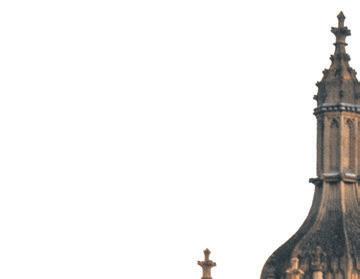
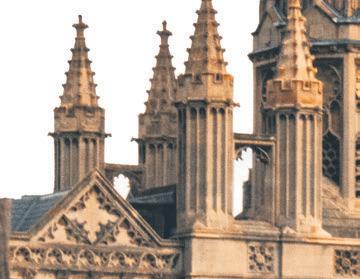




The officers also complained back three
Students’ concerns around the state of the KCSU were raised on the Facebook with one writing: “ e KCSU has no accountability. e president is absent and present at the same
Another questioned the whereabouts of the committee, stating: “Where tf is the KCSU president? e ‘on behalf of’ emails are funny… surely in your capacity as an elected president you shouldn’t be delegating to the VP”.
investments amid pressure from students to divest from arms companies, following a student-proposed paper urging King’s to cut ties with the arms industry.
e paper, which proposed a deadline of the end of 2025 to pull investments from weaponry, was co-signed by the KCSU after a vote, before being taken to the council.



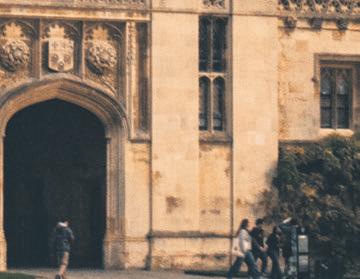
is news comes after the Downing JCR vice-president was forced to resign over corruption allegations last year, after they “acted in ways that did not meet the standards expected of a student representing the JCR”.
e KCSU has also found itself in con ict with pro-Palestinian students campaigning for divestments. One student, who was approached at the encampment by the president, alleges that they “agreed that I would write a council paper on divestment, and he would submit it to give it more credibility”.
“He said student activists at King’s were seen as the ‘bad guys’ and that whatever we sent would not be passed. So, I sent the paper to the KCSU President. It was not submitted to council as agreed. Instead, the president and VP waited until the deadline had passed to send me feedback,” he continued. e president has denied these allegations.
Last term, King’s agreed to review its
A representative for the KCSU said: “ e KCSU is a democratic union. Due to extenuating medical circumstances, the President was temporarily absent from the KCSU. e KCSU Standing Orders do not require a vote to be held for a temporary absence and the KCSU Exec unanimously agreed that the VicePresident would temporarily assume the post.”
“ e BME O cers were erroneously dismissed and were shortly reinstated with a full apology from the KCSU exec. e KCSU exec has a positive relationship with pro-Palestinian students and have taken action to support them including establishing the A ected Students Support Group, fundraisers and establishing the investments working group,” they continued.
Joinadiversecommunityofscholarsandconduct cutting-edgeresearchwith fiveyearsoffullfunding*

Studyintwocampuses-EuropeandAsia Securetopacademicplacementsworldwide StrategicallianceswithWhartonandSorbonne Bepartofasupportiveandhighlydiverseacademiccommunity
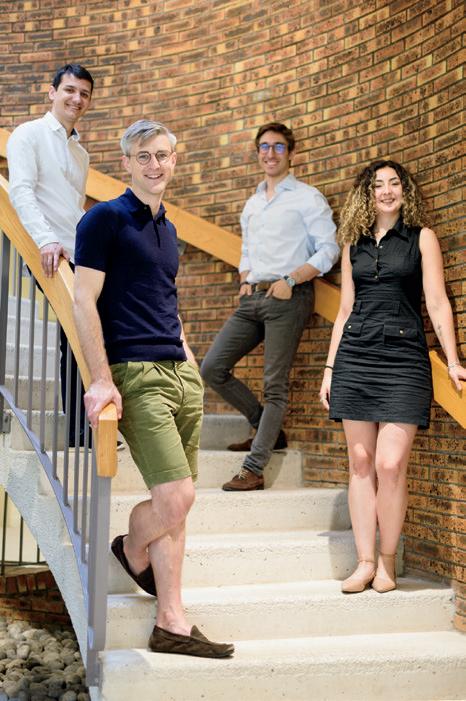
We welcome prospects from diverse backgrounds, including those outside management, with or without research experience. Industry professionals seeking to transition to academia are encouraged to apply.


Apply now for the mid-August 2025 intake


Cambridge students and alumni are eligible for application fee waiver for the 2025 intake. Contact inse.ad/contact-phd-team-cambridge for details.
*Visit inse.ad/phd-financingformoredetails






Anuk Weerawardana Deputy News Editor
he Cambridge Students’ Union (SU) is lobbying for reading weeks in subjects to address impacts on students’ mental health, following the University’s watchdog calling for “greater structural reform” in University workload.
A motion proposed by undergraduate SU president Sarah Anderson sought to resolve University procedures that afect student wellbeing. his included campaigning for the implementation of a reading week and setting clear boundaries for supervision scheduling. he meeting took place after the 29th report of the board of scrutiny which urged the University’s review of teaching to make “concrete actions and structural reforms” rather than “simply providing warm words”.
64%
of voters in favour of introducing a reading week in a 2022 referendum
Prior to this, the University Council and general board acknowledged the “culture of overwork” at Cambridge in July 2024. hey also made note of a 2022 SU referendum where 64% of voters voted “Yes” to the question: “Do you support the introduction of a full freshers’ week in Michaelmas Term and weeklong Mid-Term Break/Reading Week in
Michaelmas and Lent Terms?”
Katie Clarke, SU undergraduate access, participation, and education oicer, stated that: “he reading referendum is still on the table. It’s not going away, but currently we can only campaign for the reading week because we have been given a mandate for [it].”
“We are asking you guys to expand our support because the workload crisis is an urgent thing, but some of these suggestions can be implemented much faster than the reading week can,” she continued.
Earlier this year the SU held a workload forum which found that 59% of students were rarely able to complete their work to their satisfaction due to high volume. 55% felt that this volume to be completed on their course was the number one cause of unmanageable workload.
Prof Bhaskar Vira, pro-vice-chancellor for education and environmental sustainibility, told attendees of the forum that “boundaries need to be imposed” to improve student welfare.
his follows the recent publication of an article by ex-Cambridge academic, David Butterield, who slated the current state of the University. He claimed that a “mental health crisis […] has ushered in developments that disrupt university life,” and that accessibility changes had “infantilised” Cambridge.
Opposing the idea of a reading week, Butterield added: “Many students are now excused from writing essays and permitted to submit bullet points”.
Butterield has previously been in hot water with Cambridge students. Following a 2020 Spectator article, Butterield was accused of “[downplaying] the existence of racism within the ield of Classics and the under-representation of Black, Asian and Minority Ethnic (BAME) people within UK Classics”.
59%
of students feel they are rarely able to complete work to their satisfaction
he scrutiny board also called for the University to increase the supply of supervisions to ensure they are easily accessible to students, stating that “the University’s reputation for education is based on the strength of its small-group supervision system, [it] should be protected and defended as much as possible”.
he Board claimed that the University had fallen victim to “siloed thinking” over supervisions being a college matter, and called on the University to better facilitate the organisation of supervisions. he Justice for College Supervisors campaign had threatened a supervision boycott last Michaelmas. he planned boycott was suspended following a negotiated increase to supervision rates for the 2023-24 academic year.
he University of Cambridge was contacted for comment.
Comment: It’s high time the University took its workload problem seriously Alice Mainwood
he University’s policy watchdog has spoken out: it is time for “concrete actions and structural reforms,” rather than “simply providing warm words”. It’s reassuring to know that I’m not the only person frustrated by the University’s “warm words”.
Every term I’m greeted with an abundance of emails letting me know that there are sources of help available to me, and that my college tutor, director of studies, and college chaplain will always be happy to talk to me when I feel stressed or overwhelmed. I ind myself gritting my teeth when I read those emails – not because I’m not grateful for that help, but because I’m fed up with every ofer of help being painfully retrospective. his University asks an awful lot of each of us, before even taking into acocount that we all have lives and problems beyond our degrees. To neglect to think ahead, and work out how they can prevent us from burning out, is to neglect their duty of care. If the University expects so much of our time and energy, then we're within our rights to
ask for more in return.
A world class education shouldn't come with the disastrous consequences that it currently does. Mental health does matter, more than the University cares to admit.
It’s not every university that has a light-heartedly universal term for the chronic stress that gets us all so down half way through term, but the ‘week 5 blues’ are a commonly accepted part of life here in Cambridge. We deserve better than that. We deserve to not have to anticipate a paralysing overwhelm to hit us in week 5, and to not have to plan ahead for the days where we’re so busy and stressed we can barely function properly.
Something needs to change that will stop these problems from happening, rather than just ofering “warm words” when we are inevitably struck down. A reading week would be a start, but I doubt even that would be enough. It’s high time the University tackled the workload problem properly, instead of skirting around it with half-hearted offers of improved welfare.
Iris Rogers Deputy News Editor
Students at the University of Cambridge are being targeted by a phishing email which steals their University login details.
he scam spreads in the form of Dropbox emails, described as “dodgy” in an email from Jennifer Pollard, computer oicer at the English Faculty.
She warned: “If you HAVE received one and you clicked on the link and got something other than ‘ile not found’, the advice is to ‘change your password as soon as possible’”.
She also suggested contacting the University Information Services (UIS).
In the scam, a legitimate looking email is sent from a Cambridge student’s email address, stating that the student had “invited” the receiver to “view the ile University of Cambridge #55667.pdf on Dropbox”.
Once a student clicks the link they are prompted to login to Raven, the student authentication service, which gives the hackers their email login details as well as access to the student’s academic details, including exam enrolment, time-
tables, and courses.
Students who open the link are unable to open the ile and then lose access to their email and all Cambridge University content associated with it. his prevents students from using Cambridge to access research papers and resources.
A student at Peterhouse who was attempting to recover her account said: “It’s very frustrating. here was a very quick response from the UIS to initiate the process, but I’m waiting on my password to be actually changed.”
She had to ask a friend to forward the seminar reading for this week due to the disruption.
“It was really good that the English Faculty emailed students so quickly, but it wasn’t very useful as I couldn’t actually get into my email account,” she continued.
Another student explained how they were “so close to clicking it – I’m glad I didn’t” adding: “I could’ve exposed my computer to so many viruses; I’m really thankful I didn’t click on it.”
A third-year English student told Varsity: “he threat of the scam left me feeling very worried about losing my data.”
“I keep all of my essays and college bill

receipts on my laptop, so if I had been hacked I could have ended up in serious diiculty. It is especially concerning that the scammers are using Dropbox, becuase that's the platform used by my supervisors, so I could well have trusted them,” they continued.
his recent scam comes after Cambridge students have been subject to multiple online attacks this year. In July, international students were targeted by scammers ofering a discount on next year’s tuition fees in exchange for an upfront payment, while fake Ticketbridge accounts preyed on demand for May Week events.
At the start of this year, phishing emails claiming to be from department heads tricked multiple staf members into making expensive purchases. Staf and PhD students were reimbursed by their faculties after buying vouchers worth up to £500.
he University’s medical school was also hit by a cyberattack in February this year, leaving hundreds of researchers unable to access computers due to “malicious activity”.
he University of Cambridge was contacted for comment.
Nick James Deputy Editor
Vice-chancellor Deborah Prentice and Cambridge MP Daniel Zeichner have both welcomed the government’s budget after Cambridge received signi cant investment.
Cambridge was mentioned twice in Chancellor Rachel Reeves’ hour-and-a half speech on Wednesday, rst about providing investment to help Cambridge “realise its full growth potential” and second to rea rm the government’s commitment to “deliver East West Rail to drive growth between Oxford, Milton Keynes and Cambridge”.
e budget announced more than £40 billion in tax increases, including a rise in national insurance paid by employers, an increase in capital gains tax as well the ending of o shore trusts to shelter assets from UK inheritance tax.
e tax increases will help fund a planned £100 billion rise in capital spending, with pledges for an extra £22 billion for day-to-day spending in the NHS and £6.7 billion for education, including £300 million for further education.
e news comes after the previous

government planned to make Cambridge a central part of their levelling up agenda, with Michael Gove drawing up plans to make the city the “science capital of Europe” which included building 150,000 new homes.
In response to the budget, Professor Prentice said: “We welcome the Government’s recognition today of Cambridge as a globally renowned centre of excellence in science and innovation, and we look forward to working with colleagues locally, nationally, and beyond to ensure Cambridge realises its full potential for driving growth.”
Commenting on the increased spending in public investment, Zeichner said: “Importantly, that includes the green light locally for £10 million of new investment in Cambridge and our local infrastructure. is funding will enable the Cambridge Growth Company to develop an ambitious plan for the housing, transport, water, and wider infrastructure Cambridge needs to realise its full potential.”
He continued: “ is funding, together with East West Rail, will support life sciences companies and unlock private investment, to connect the laboratories, industrial parks, and housing needed,
cementing Cambridge’s status as a globally renowned centre of excellence and its important role within the Labour government’s new Industrial Strategy.”
More recently, Sir Keir Starmer faced calls from leading companies like AstraZeneca and Airbus to revive e orts to develop the Oxford and Cambridge region into the “crown jewel” of European innovation.
In July, business leaders and university heads wrote to the prime minister to ask for greater investment in transport links, nancial incentives and research space to create a “global science and technology supercluster”.
In addition to the other tax changes announced in the Budget, Labour also con rmed a cut to the draught duty by 1.7%. According to Reeves, this will mean “a penny o the pint in the pub,” bene ting all beer-loving students.
In a boost to student workers, the budget also outlined increases in the minimum wage which are due to come into e ect in April 2025. e changes will mean those aged over 21 will see their minimum wage rise to £12.10 an hour, while 18 to 20 year olds will see their pay increase to £10.
Sophie Denny Senior News Editor
Cambridge has axed their senior leaders Master’s apprenticeship despite receiving an “outstanding” rating across the board from Ofsted last month.
e apprenticeships, which were launched by the University’s Institute of Continuing Education (ICE) in 2019, delivered Level 7 programmes for senior leaders in criminology and police management, and a separate programme for architects.
At the time of the inspection, the Institute had 76 senior leader apprentices and 88 architect apprentices, however enrolments for the senior leaders course have since closed.
A spokesperson for the University of Cambridge con rmed that the senior leaders programme was no longer viable, with the University starting its last apprentice for this course in November 2023.
Ofsted praised the course’s “considerable academic rigour” and expert assessment, both of which enabled the 164 apprentices to “thrive”.
e senior leaders apprenticeship
attracts £14,000 in funding per apprentice and lasts a minimum of two years. Despite no longer o ering the scheme, the Institute is still accepting applications for the two-year long Criminology and Police Management Master’s which costs £31,000.
Dr James Guzzard, Head of ICE and Director of Continuing Education, wrote in the annual report that 2022-2023 had put “punishing” levels of demand on sta . He explained that because “the University’s o er of continuing, professional, and executive education is distributed across more than twenty providers, strategic frameworks are absent, meaning coordination and economies of scale are di cult to achieve, and internal competition a concerning distraction.” is cancellation comes two years after the Institute dropped their apprentice-postgraduate certi cate in research and and innovation management for academics.
Other training providers have also stopped their training programmes, with Dyson announcing that they would pay £250,000 per employee in training to avoid the “heavy (and costly) administrative burden” of degree apprenticeships.









































































































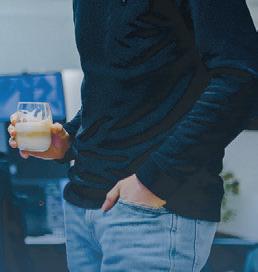



















Divinity professor James Orr has revealed that JD Vance, Trump’s VicePresidential pick, once called him his “UK Sherpa”. Speaking on a podcast, Orr said that Vance’s family visited his Cambridge home last summer. e two have a close friendship with Orr saying the pair “hit it o ” over shared religious interests. Orr claims that the Republican VP candidate takes “a great deal of interest” in British politics and was keen to discuss the recent election.
A document sent to Caius students told them “to consume alcohol responsibly” after numerous instances where intoxicated students have required porters' assistance. Head Porter Martin May wrote: “I feel it is necessary to clarify our position on this matter to ensure everyone’s well-being.” e information recommended students to plan ahead if they “anticipate the possibility of becoming intoxicated” to ensure everyone receives the help they need.
An AI algorithm that can detect heart murmurs in dogs has been developed by a Cambridge University research team. Using a machine-learning algorithm that detects human heart murmurs, scientists have been able to spot signs of heart problems in our canine companions. Heart murmurs are a key indicator of heart disease in dogs, but this new tool could help to more quickly identify dogs most in need of treatment.
On ursday, Trinity opened their new woodland walk and orchard in the Fellow’s Garden. e garden was designed as a mindfulness space for college members, and to encourage biodiversity. Trinity’s chaplain consecrated the orchard, while the trees were serenaded with Benjamin Britten’s ‘Flower Songs’ by the College choir. e natural world has also given the orchard their blessing, with deer, badgers, vole, foxes, and squirrels already being spotted there.
SIMPLY PRESENT YOUR CARD IN STORE

Cambridge’s smallest pub shuts its doors
Cambridge’s smallest pub has closed down just seven months after reopening last March. e King Street watering hole found itself deep underwater after a long period of renovation, and e Rad has now “sadly closed,” according to a spokesperson. “Unfortunately the cost of making the building functional was too high, the debts too heavy,” the spokesperson said. “We’d even paid the rent for most of the time we were working on the building but were falling behind after opening”.
Cambridge resident rows solo to South America
21-year-old Zara Lahlan, from Cambridge, is hoping to become the rst woman to row solo from mainland Europe to South America. Lachlan set o from the Portuguese Algarve earlier this week – and aims to make it to French Guiana in 90 days. e Cambridge resident is hoping to inspire other women to get into tness. “If I can complete this challenge having never rowed on the ocean before, then other women can attempt a challenge of their own – albeit probably not a cross-Atlantic row,” she told the BBC. Lahlan has also expressed concerns about potential aquatic encounters, stating that she she faced “the risk of bumping into orca” and “the 11 different species of sharks and marlin known to puncture the hulls of small boats” during the challenge.
Escaped parrots found safe and sound in Cambridge
A pair of critically endangered parrots were found in “good health” in Cambridgeshire this week, after escaping from London Zoo (ZSL) in a 60 mile odyssey across the home counties. Lily and Margot, too “loud, chirpy” macaws, were “a little tired after their long ight,” a ZSL spokesperson told the BBC. anks to a tip-o from a family in Buckden, Cambridgeshire, the pair have made it safely home. After some time in quarantine at ZSL, they will rejoin their parents, Popeye and Ollie.
Magdalene JCR spent up to 21 times more on their ents budgets than Clare, and Caius spent over £50,00 on sport societies, Varsity can reveal.
A survey conducted on JCR budgets displayed vast di erences in how much money JCRs receive, and what it is being spent on.
Of JCR funding contributed towards College ents, Magdalene had the biggest budget with over £6,500 going towards ents. is was in stark contrast to Clare, who only put £302.96 towards college bops in the 2023-2024 academic year.
One Clare student criticised their bop spending, stating: “Naturally, Clare Cellars is the best college bar. Clare Jazz, queer nights, pub quizzes, birthday bashes – that’s all brilliant. But what people from other colleges don’t seem to realise is that ‘Clare bops’ basically don’t exist.”
One Magdalene student commended their College’s bop spending, telling Varsity that bops are “an integral Magdalene tradition”. ey continued: “ ey’re a great chance for inter-year integration and are an important way for students to kick-start the term, and celebrate after a long eight weeks. Many of my best university memories are the product of the ABBA-equipped DJ, the text wall, and, crucially, the limitless buckets of bop juice provided by our JCR.”
Wolfson has a shared budget between their JCR and MCR’s events, but spends £8,500 on ents across the two bodies. On top of this, the Wolfson Student’s Association also puts £6,400 towards the “Wolfson Howler,” a 15-year
running stand-up comedy night held in Wolfson College, which boasts “fresh acts from local up-and-coming student comedians and a professional headliner o the London circuit”.
£3,000
Amount Downing JCR spent on a sports day swap with Lincoln College, Oxford
Among the JCRs whose budgetsnance sports clubs and societies, the total spent by JCRs in 2023-24 di ered from £50,023.55 at Caius to £5,250 at Girton. Of Caius's gure, £20,778.11 went towards the Caius the boat club, with badminton receiving the second largest amount at £3,938.07.
is pattern is consistent across other colleges, with Jesus badminton college receiving £3,000, while at Christ’s badminton are given £2,095 – the second largest amount of all sports and societies at the College.
Downing spent £20,342.00 on sports societies, but also put a further £3,000 towards a sports day swap with Lincoln College Oxford, which included football, mixed netball, rounders, ultimate frisbee, and a “nice meal” in the city.
ere are also multiple food based societies across colleges. Jesus has a Steak Society that was provisionally allocated £150 a year, but had its funding removed by the Treasurer before they received it.
Meanwhile Trinity Hall’s Dumpling Society receives £100 a year, and £50 went towards the Alternative Protein Society
at Clare last year.
Robinson’s “in atable society” received £220 in the budget last year, but was hit by a crackdown on as a “scam societies” by the College’s JCR (known as the RCSA) due to concerns it did not actually exist. In an attempt to crack down on frivolous societies, the RCSA passed a motion which forced societies to prove their existence, preventing them from “using RCSA funding without publicly announcing their events, or their existence at any stage beyond their creation in an open meeting”.
RCSA President Alex Myall said at the time that the policy was aimed to stop “people [from] bullshitting and sending out emails” without actually wanting people to join them.
A spokesperson for the RCSA told Varsity that: “ e issue of society publicity was resolved in Lent 2024 with all Robinson Societies understanding that they must advertise themselves to all members of the College. e RCSA has never identi ed individual societies as “scam societies”.
£700
Amount Pembroke JCR spent on yoga sessions for students
Pembroke allocates almost £4,500 of £31,000 managed by the JCR to welfare support for students, which includes £700 towards yoga sessions, £525 to STI tests at bops, and £50 on visiting dogs in exam terms.
One Pembroke student told Varsity: “Having attended yoga sessions subsidised by the JPC, I have always found them to be a wonderful way to switch o from the stress of term for an hour. It seems to me that such e orts to foster a sense of community and look after our wellbeing are well worth the money.”
A spokesperson for Pembroke JCP said “Pembroke Junior Parlour Committee is proud to o er a consistently high and variegated welfare budget provision, which we use to fund a range of resources and activities to ensure all of our undergraduates feel safe and supported in their college environment.”
Peterhouse is currently overspending their JCR budget, being in £5,263.4 of debt to the College. Meanwhile, Caius is currently in a surplus, having carried over £5,643.17 from last year’s budget.
Homerton is the only College with a sabbatical role for their president, and spends £38,700 on salaries and accommodation for them, along with any other sta that the HUS depend on. is gure is larger than the entire JCR budget of 14 other colleges, over quadrupling the amount JCRs at colleges such as Churchill, Peterhouse, and St Catharine’s receive.
Of colleges approached for data on their JCR budgets, 13 disclosed a completed budget, 11 disclosed partially complete information, and four did not disclose any. Some gures from colleges are from last year and some are projected spends. Caius’ JCR budget included surplus from their previous year.
All parties were contacted for comment.
Trinity Hall's budget refers to their contribution to the College's June Event.


Hannah Gillott rounds up student news from around the country
Uni of Gloucestershire campus delayed by Roman burial site
e University of Gloucestershire has seen plans for a new campus delayed, after more than 250 sets of human remains were discovered on the building site. ought to be evidence of a Roman burial site, some remains found date back 1000 years. Gloucestershire’s vice chancellor has said she has “no regrets” over the building, despite the delays and added costs. e new campus will be “a game changer for Gloucester, but also Gloucestershire and the region,” vice chancellor Clare Marchant told the BBC.
Oxford student ‘betrayed’ by PhD snub
An Oxford student has accused the University of not acting “in good faith,” after she was forcibly switched from a PhD to a Masters course. Lakshmi Balakrishnan spent nearly £100,000 over four years at Oxford, only to be told her PhD was not up to scratch. Balakrishnan has disputed the decision, and is working on an appeals process supported by her college, who have expressed concern to the University over her treatment. e snub has caused controversy online – with some arguing that no amount of money guarantees you a quali cation, whilst others have claimed that the University should have been more transparent with Balakrishnan.
Uni of She eld faces £50 million shortfall
e University of She eld is facing a £50 million shortfall this year, following a drop in student enrolment. She eld is keeping quiet on redundancies, but has told all departments to make savings. “Like many universities across the UK, we have seen a reduction in the number of international students joining us this year and this will have an impact on our nancial position,” a spokesperson told the BBC. Student gures at Shefeld have fallen by 7% since last year – a drop mainly linked to a drop in international applications.
Everyone agrees British higher education is in crisis. But why, and how do we x it? Evie Nicholson and Freddie Reid go head to head on the biggest question facing academia




It is hard to not hear the bells tolling for higher education in the UK. Almost every statistic presents the same grim reality. e O ce for Students (OFS) warns that 40% of universities will run budget de cits this year. e Financial Times reports a £5.3 billion de cit in university research activities. Research by the UCU highlights that 74 universities are slashing costs through redundancies and hiring freezes. A Guardian report exposes the ‘wiping out’ of black scholarship due to cuts. As of last month, international student visa issuance had dropped by 17%. To top it all o , England’s degrees are among the most expensive in the world.
Against this bleak backdrop, Universities UK (UUK), the trade group for higher education providers, has published its Opportunity, growth and partnership’ report. It acknowledges that higher education has reached an “in ection point” and calls for a new relationship between universities and the government to secure economic growth and future-proof British higher education’s “soft power”. e ve “big shifts” proposed – expanding opportunities, improving collaboration, generating local growth, securing research, and establishing a global strategy – aim to do this.
e report is timely, ambitious, and scarily optimistic about how fast these


oday, thanks to a long decline in academic standards and a lack of proper regulation, a British degree is worth less than ever. e narrative which so many young people are sold when deciding whether to go to university – that it is both an incredible social experience and a careerenhancer worth incurring tens of thousands of pounds of debt – is becoming more detached from reality every year. Since the Major government’s decision in 1992 to convert all remaining polytechnics into degree-awarding universities, enrolment has shot up to over 38% among 18-year-olds as of 2021, and the percentage of First class degrees awarded has risen from 7% in 1994 to 30% by 2023. ese statistics suggest that our universities have been incredibly successful at producing capable graduates; the reality is otherwise. e ever-growing proportion of ‘good honours’ (Firsts and 2:1s) awarded at UK universities, rising from below 50% in 2000 to around 80% by 2019, masks the reality of declining academic standards and degrees becoming worth less, not
more, than ever before. UK school students have not notably improved on international metrics since the turn of the millennium, and a 2016 OECD study of 23 countries ranked English graduates in the bottom third for basic skill levels. Universities are handing out better grades every year, even though students aren’t improving. e explanation for this conundrum is grade in ation. It suits all parties: students who seek to graduate with good honours, faculties and universities that can now showcase their ever-increasing prestige, and government ministers who wish to maintain the narrative that higher education is one of the country’s greatest recent success stories, while avoiding the hard work of actually tackling the deep-rooted issues in the sector. e trouble is that this is a mirage, and graduates are the ones who pay the price, as employers, faced with evermore 2:1s and Firsts from reputable universities on the CVs they peruse, simply cannot pick up the slack. UK graduate employment rates have been stagnant since the Great Recession, and graduate
❝ e average British voter is over 45; higher education as an experience is simply not relevant to the electorate
big shifts can be implemented. Yet, as I see it, the crisis engul ng higher education is not solely economic, it is existential. Instead of big shifts to serve age-old growth-oriented ends, the funding crisis should be seized as an in ection point for rethinking who higher education serves and what it should accomplish.
e report focuses on funding challenges. Fair enough. e last time universities in England broke even was 2015-16. e £9,250 tuition fee instated in 2010 has lost over a third of its value due to in ation. On this, UUK calls for a hybrid solution – index-linking tuition fees to in ation, reversing the decline in international students, and making the whole ‘business’ more e cient.
Yet UUK’s reforms won’t go far enough or fast enough, and the cracks are already showing. Index-linking has been scrapped in favour of a one-o fee raise to £10,500. Meanwhile, Lord Mandelson, a UUK commissioner and former minister, has called for academics to cut research and increase the teacher-student ratio. Such austerity still won’t x the crisis, and responsibility will likely fall on the private sector to fund degrees.
UUK haven’t quite plucked up the courage to admit this economic reality. Yet doing so is essential to reckon with the more glaring issue: higher education isn’t working. In this regard, the crisis is not dissimilar to the current furore over the NHS, prisons and HS2.
Like most discourse generated by technocrats, the UUK report is littered with corporate jargon. Students are con-
median salaries have declined over the same period. Perhaps the most shocking statistic is that, even as of 2010 when the sector was in a far better overall state than today, it was estimated that 58.8% of UK graduates were employed in nongraduate skill level jobs, the third highest proportion in the EU behind only Greece and Estonia.
One of the few promising signs is that stakeholders may be wising up to the fact that the system they have collectively championed since the Major government turbocharged its unchecked expansion in 1992 is failing to deliver for young people and the country. A high-pro le recent report by Universities UK has urged ministers to consider increasing tuition fees to arrest the long decline in spending per student (from £11,029 in 2012 after the last signi cant fee increase to a projection of £9,158 for 2024), accompanied by a reintroduction of maintenance grants to prevent students’ personal nances being hit further. It also recommended expanding careers services for recent graduates, restoring the teaching grant and possibly
❝ Grade in ation is a mirage, and graduates are the ones who pay the price
sumers, universities are businesses. e industry’s health is judged by nancial returns on public investment (currently for every £1 invested, £14 is generated). is is despite the fact that only 16% of the cost of a degree is funded by the government, while students shoulder the majority of the burden. UUK, OFS and other acronymised bodies rarely report that loan interest rates have rocketed to 13.5%, the graduate employment rate has dropped by 6.4%, 57% of students have reported mental illness and the privatisation and chronic shortage of student housing have forced many to live among rats, mould and damp.
Instead, a problematic, neoliberal assumption underlies the UUK report: that higher education is primarily an economic machine to “drive” regional growth and “soft power” rather than an educational and social experience. One of the more salient points made about politics today is that the real predictor of voting habits is no longer class, but age. e average British voter is over 45. What this means is that higher education as an experience is simply not relevant to the electorate. Higher education’s relationship to economic growth, migration, and Britain’s reputation however, is. I can’t help but feel that the UUK report is re ective of a much wider problem Britain has with reforming its crumbling institutions. Instead of seizing the crisis in both funding and functionas an exciting opportunity for a systematic overhaul of HE, the government continues to treat all social problems as economic ones.
rejoining the EU’s Erasmus+ scheme. ough these are all welcome reforms and will no doubt bene t students across the country if implemented, there remains a continued failure to address the essential issue of the devaluation of a British degree and its consequences for graduates. A possible solution would be to withdraw university status (and funding) from underperforming institutions and invest in alternative higher education provision, such as degree apprenticeships and National Diplomas, to provide a serious alternative to university for those who wish to progress onto tertiary education. We can hope that serious changes such as these will be implemented, and that they help return the UK higher education sector to one of the nation’s great successes. However, too many young people in this country will not bene t from these reforms and have already been saddled with tens of thousands in debt and a degree worth less for their future than ever before. ey deserved a better outcome, and we must ensure that the next generation of UK university students are given it.
Studentships cover full tuition fees plus an annual stipend
Search LSE PhD funding to ind out more

Apply for a PhD by 15 January 2025 or 1 December 2024 for Law and 18 December 2024 for Economics and International Development to be considered
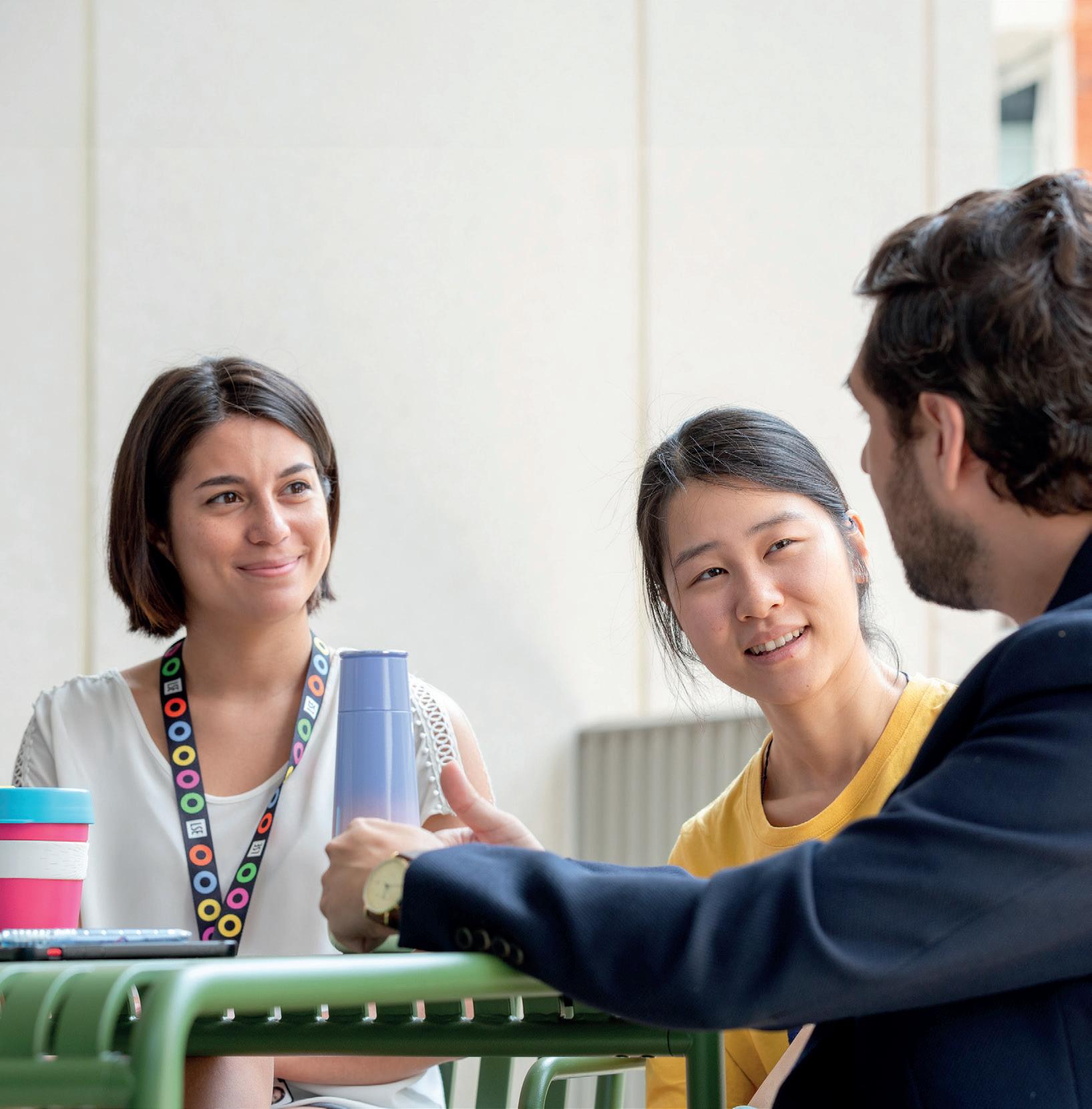





ast year, I decided to start weight training. Rather insecure about the size of my biceps (non-existent) after a shameful arm-wrestle defeat, I was encouraged to discover that Jesus College’s gym has Women and Non-Binary hours, for an hour every day. A sign advertises them by the door and it is impossible to miss: you have to push a button next to it to get in. And yet, when I went on a Monday at 10am, or ursday at 2pm, there were nearly always men in there.
I did what I do best: moral panic. Was it unfair to be annoyed about this? Maybe, somehow, they hadn’t noticed the sign by the door. Maybe they’d been in the gym the hour before, and had lost track of time. Maybe it was a particularly busy day and this was their only chance to exercise. Maybe Jesus’ gym bros are actually all non-binary? (I can now conrm – the majority are not). I never felt in imminent danger, so was I overblowing
Fthe situation?
In short: no. Wrapped up in the inconvenience I might be causing those men by taking issue with a rule they were breaking, I ignored the fact they were actually causing an inconvenience to me. I didn’t feel actively threatened, but my experience of the gym had been indelibly a ected. Intimidated by the presence of men a lot bigger, stronger and louder than me – who I knew on some level, did not respect my right to that hour – I quit halfway through workouts I had planned, and left feeling frustrated with myself. Part of the pull of weight training, for me, was self-protection: I wanted to know that I could push back against a man who barrelled into me in a club, or e ectively sock him one if he threatened me in the street. And yet, with much irony, here men were, essentially barring me from training to do so. e more conversations I’ve had, the more I’ve realised the extent of the issue.
❝ My experience of the gym had been indelibly a ected
Most colleges have some version of ‘marginalised gender gym hours’, and most of the people I talked to considered them basically ine ective. ey are hardly embedded in college ethos: in 2019, Varsity reported ‘intense opposition’ in a number of colleges. At the time, Medwards tried, and failed, to introduce one (surely its male sta members wouldn’t have minded?). While these hours are widespread now, they don’t really work, and I don’t count that as progress. As the Daily Mail so desperately wants us to know: ‘not all men’. I am aware. I know some of the men I see in the gym; I do not believe that they are dangerous. But this is besides the point. Women and Non-Binary Gym Hours are about inclusion just as much as they are safety. ey communicate that the gym is a space for all; that strength is not male-speci c. e media’s treatment of Imane Khelif, following the recent Olympics, proves that we still struggle with women owning
their physical power, and what a strong AFAB person can look like.
My experience is also a fraction of the issue. I have no major trauma which might deter me from a mixed gym, nor am I religious in a way that would. I am a cis woman, armed with a relative privilege and sense of safety not a orded to my trans and non-binary peers. e very presence of men in the gym during our hours, regardless of their intentions, excludes these groups from a space which is rightfully theirs.
It should never be the responsibility of women and non-binary people to challenge those who ignore their gym hours. We don’t want to, and shouldn’t have to, vouch for ourselves in the gym, the very reason these hours were instituted. Colleges need to take steps to sustain the policies they supposedly endorse. To do otherwise renders the initial e ort useless, and is than if the hours had never existed in the rst place.
or once, I am convinced there is something Cambridge students don’t know about. Or, if they do, they don’t see its extraordinary value. I am talking, of course, about lectures – more precisely, other subjects’ lectures.
Cambridge makes no secret of its pedagogical philosophy: they admit students of exceptional ability in their chosen eld and train said students to excel in it, and only it, for three years. It is highly individualised, and the intellectual rewards are unparalleled. It’s also the natural continuation of the British education system which prompts children to nd their particular elds of interests early on in their schooling.


And yet somewhere in the basement of my house in Switzerland remain the yers I collected from tours around American colleges, all advertising things like ‘liberal arts’, hundreds of ‘clubs’ and ‘sororities’ to choose from, as well as research opportunities for even the lowliest undergraduate. ey’re attractive, glossy, wide-ranging. In another lifetime, I can easily picture myself roaming one of those campuses, taking ‘minors’
sic, too) alongside my





in Philosophy and History (let’s be crazy and throw in MuEnglish ‘major.’ I know, the vocabulary
❝ Where does a ‘class’ stand amid our categories of supervision,
is foreign to us. Where does a ‘class’ stand amid our categories of supervision, seminar, and lecture, anyway? But the real question we should be asking ourselves is whether something is being lost in translation; whether, in the very act of specialisation, we are narrowing our horizons in irremediable ways. In other words, what if the Americans are onto something?





Consolation of Philosophy


seems simple, but if one does

I’ve been feeling quite anxious about this recently, as the gaps in my contextual knowledge seem to become more serious (and more embarrassing) as my degree advances. For all its emphasis on ‘Practical Criticism and Critical Practice,’ Cambridge English, like any English degree, rewards historical awareness, factual recall, and, when warranted, theological uency. In other words, it will always be a Good ing to have read the before tackling Chaucer or to know about the Reform Act of 1832 when analysing Dickens. It want to understand Boethius or the Chartist movement (for example), this has to be done either through independent reading,

or, as I’d like to propose, by attending other subjects’ lectures. If you’ve obsessively scoured the ‘undergraduate study’ page of the University’s website when rst applying (like me), you will have noticed under the ‘lecture list’ section an interesting detail regarding lecture attendance. It reads: ‘As a matriculated student, you are entitled to attend any lectures (but not classes or practicals) of any degree course.’ Essentially, you can sit in on whatever you like, ‘if there is room for
[you] in the lecture theatre.’ As a brighteyed fresher, I read this statement and got excited. Forget going to America for a ‘liberal arts education’ – I could have the best of both worlds right here, in






Since my rst Michaelmas term, I have attended lectures on everything from the uni cation of Germany to Rawls’s eory of Justice, Corneille’s Le Cid to Roman acspirited lecture on Descartes (and understood close to nothing), a survey of post-war British econ-




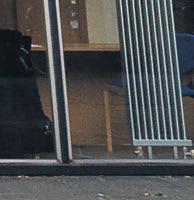
and a discussion of Cicero. I get some bewildered looks when I tell people this – but it’s been a wonderful, slightly cheeky experience so far, sitting among maybe a dozen classicists nodding along to a lecturer’s brilliant take on Hector, or a hundred economists diligently taking notes on that week’s micro. e best thing about it is that it doesn’t have to be directly relevant to my degree to be useful: just by sitting in on lectures whose topics I may or may not be familiar with, my horizons are expanded to encompass a whole range of worldviews that wouldn’t otherwise be accessible to me. I pick up new material to use in my essays, book recommendations, or, if nothing else, it’s just a great way to take my mind o things! is is to say that, no matter the outcome, the practice leaves me intellectually refreshed, exposed to something so di erent that I come back to my own work with a renewed interest and liveliness that is hard to put into words. It also captures something of the ‘liberal arts’ education our American counterparts are so keen on without the drawback of being spread too thin across subjects. I cannot recommend it enough. So, next time you nd yourself with some free time between lectures, why not have a wander about Sidge and pose as a historian for an hour? Or a lawyer? Or a philosopher? I’ll maybe even see you there.


IELSIE MCDOWELL
was initially rejected from Cambridge. ree days after A-Level results day, I was o ered a place to study HSPS through the August Reconsideration Pool. I didn’t immediately accept the o er, much to the confusion of my friends and family. In fact, I was torn. Until then, I thought I was going to the University of Bristol to study Politics and Spanish; ultimately, my decision was based more on the importance I placed on studying Spanish than Cambridge’s prestige. A year on, I am able to re ect on what it’s like to navigate language learning at a university that often does little to encourage it.
A bit confused and su ering from academic whiplash, I decided to put my Spanish A-Level to good use by enrolling on an advanced Spanish course through the Cambridge University Language Programme (CULP). CULP o ers general courses at various levels in 17 languages, as well as more speci c courses such as ‘Chinese for business’ or ‘Italian for musicians’. e CULP is a melting pot of students and sta from across the university; where else could I have taken an online conversation class alongside a Baroness calling in from the House of Lords? e teaching itself was also amazing, and I was able to get a C1 quali cation at the end of the course at no extra cost. I loved the course so much that,
this year, I am taking a beginners’ French course, as well as another Spanish course. ese courses are amazing, but they are far from free. ey are excellent value for what they are, and some colleges will cover the cost of them. As always seems to be the case, my college, Lucy Cavendish, will only pay for them if they are “relevant to your degree”.
So, I sent an email to the CULP, suggesting that they introduce an access scheme for Cambridge Bursary students, similar to the Cambridge Union, in order to address this collegiate disparity. To my great surprise, Professor Nebojša Radić, the rst and, 23 years later, only director of the CULP, o ered to meet with me. Given that the CULP has enjoyed a 30% increase in student numbers this year, it is operating at a “slight surplus”, so he was happy to introduce a more centralised language bursary. In his words, “the best way to use this money is to pass it on to the students”.
Despite this, Radić did note that students self-funding were far more likely to complete them. e aforementioned courses for speci c purposes tend to be funded by the departments of the students taking them. As a result, these courses often have drop-out rates of up to 70%. e general language programme, by contrast, has an 85% completion rate. is is easily worked around, however. Radić suggested that any centralised language bursary refund students once they had completed their course.
is is an exciting step towards making language learning more accessible, but the barriers to language at Cambridge learning go far beyond the nancial. Cambridge is unusual in its lack of exibility when it comes to studying languages; the only joint honours language course it o ers is History and Modern Languages.
is unusual lack of language learning opportunities seems particularly strange at a time when the study of languages is in decline. But, as a 2022 report from the British Academy and University Council of Modern Languages notes, the number of students accepted to study a language alongside a social science subject increased by 11% at Russell Group universities, while the single honours study of these languages continued to fall. Indeed, applications to study MML at Cambridge fell by 40% between 201923, prompting the department to start the development of two new joint honours language courses. In a world where graduates face a tougher job market than ever before, it is counter-intuitive not to structure language degrees in a way that re ects our changing language learning patterns.
and far between at Cambridge, but few triposes include the option of taking a language as an ‘outside’ module.Take my own degree, HSPS. It is probably one of the most exible triposes at Cambridge; among my Part IIa options was everything from archaeology to biology, yet no option to study a language, not to mention the opportunity of a year abroad.
Again, this is common elsewhere in the higher education sector. Nilyana Kirinde, an Economics and Finance student at the University of Leeds, was able to take one Russian paper. She noted that this gave her the opportunity to “use [her] brain for something not related to my degree”, which expanded her “future pathways”.




So, jealous of my friends at other uni-
versitieswithalltheirlanguage modules and armed with my Spanish C1, I made my case to the HSPS Fac-


ulty. My DoS, who had long listened to me lament not being able to study Spanish within my degree, thought it feasible, as did the paper coordinator for the paper in question, given that it was often taken by English students. But as the deadline to submit my Part IIa paper options loomed, it became increasingly clear that, as a result of bureaucratic particularities, the HSPS Faculty was not going to budge. I was told that languages are not a “social science”, so they could not justify allowing me to take a Spanish paper. Some may ask why I did not switch to MML. Honestly, I have considered it, but I love HSPS and am incredibly grateful for the CULP. At the end of the day, all decisions have trade-o s, and I am content with – and grateful for – the decision I made to accept my Cambridge o er. However, I wish it had not, at times, come at the expense of my love for languages.


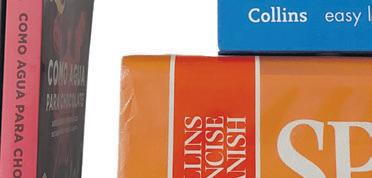
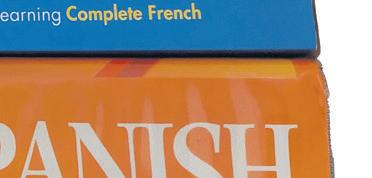





Not only are joint honours language degrees few





Glittery silver mini skirt donned, pre-drinks stu ed in a tiny college kitchen, and bright magenta cocktails in plastic cups; what magic could this be other than a Cambridge college party? Underground small rooms, the Fitzwilliam Auditorium, and even the Murray Edwards dome have all seen the infamous ‘bop’ (a title exuding edge) grace their hallowed walls. A staple of Cambridge social life for over 50 years, bops are typically student-organised events run in conjunction with the college, with an eye-catching theme, music, and cheap alcohol. At my last college bop, however, the dance oor was discouragingly empty, the music concerningly quiet, and students seemed to pop their heads in for a quick boogie before heading out to a more interesting Saturday night. It’s easy for bops to fall o into a sparse mid-20th century events room with overly sweet drinks and wince-worthy Spotify playlists. Interested to learn whether bops are losing their aura or if the bop scene is only heating up (especially post-COVID), I spoke with attendees of bops, freshers and non-freshers alike, and college ents teams across many colleges. e enduring popularity of some bops proves the tradition is far from extinct. A big name in the bop scene is the Robinson bop. While most colleges run a couple of bops a term, Jules and Jasmine (Robinson ents o cers) share with me how the Robinson bops every Friday are an “institution”. Similarly, the Trinity Hall ents team (not just two, but ve people!) have sold out every bop they’ve run over the past year. One of their ents o cers, Georgia, emphasised that the trick is ap-
preciating what people want: to her, this is classic sing-along music, cheap drinks, and a lively atmosphere.
Instagram marketing and word of mouth are the main means of promotion. Retro Pinterest graphics dot the Instagram of Trinity Hall ents, and Caius ents’ Instagram page posts satiric launch videos. Popular bop Instagrams are slathered with digital camera photos from previous nights. e bigger bops have both live music (student bands such as Half Orange or Silver Lining) and a DJ – the biannual ‘Fitz-Up’ has both a live music and dance space and happens on a big enough scale to need a formal security team. Robinson switches up the music according to the theme –think techno for Berghain theme and 70s for 70s night. While few colleges aim to and succeed in emulating a club-style atmosphere, the dark and enchanting experience of new friends and spontaneous romance, many seem to be abandoning a half-hearted in-betweener of a bop and replacing it with a themed bar night. Sidney Sussex has stopped bops entirely and now just does themed bar nights, and Emmanuel’s bops are named ‘bar-exes’ because the bar closing time gets extended.
Commitment to dressing and decorating on-theme is a mixed bag, but “some people really commit” (according to the Tit Hall ents o cers). Blowup cactuses decorated Pembroke for the Wild West theme, complete with ‘Wanted’ posters of the JCR members with the promise of a free drinks token if you can nd them. Fitz’s Wild West theme involved hand-painted saloon doors, and Emmanuel did an ‘Emfess’
themed bop and stuck Emfess posts on the walls. emed drinks are a hit (‘Peter Pan’ cocktail at Tit Hall for the dress as your child’s dream theme). Fitzwilliam o ers a best-dressed prize. Most are entirely student-run, courtesy of college events o cers. Poppy, ents o cer for Fitz, called the planning “extensive”. e
Tit Hall team shared the haphazardness and creativity involved: lots can come together “a bit random and last minute”, but this can also be part of the thrill of getting to see people enjoying the event you put together.
But these are the successful ones –what’s happening elsewhere? At some colleges, bops are more of a dusty relic, held out of college tradition but minimally attended, mostly a way for freshers to meet in the rst week. Multiple people cited timings as bops’ main drawback. Large-scale ones like Robinson and Fitzwilliam run late into the evening, ending at 1 to 2a.m., whereas many others are under the obligation to be wrapped up by 11p.m., especially when in a residential area of college. A night that starts at 8 and ends at 11 feels oddly premature; Eloise from Clare noted most people don’t feel properly partied unless they’ve committed to at least watching the clock strike midnight. is makes the di erence between Fitzwilliam, where the ents o cer told me people “commit for the night”, and colleges like Clare and Pembroke, where the bop is “more of a pres thing”.
But, especially at work-intensive Cambridge, an early nish doesn’t have to be a bad thing. Jules shared that many people enjoy the earlier end, where they can be in bed by midnight. Also, enjoying a night of partying on the cheaper side doesn’t hurt: Robinson’s are free, and most colleges are either free or between £1-3. At Clare, the money often goes to charity. Most bops are fairly college-only: at Emma, porters even scan camcards
at the entrance to ensure Emma-only attendance. But college-only doesn’t have to be a drawback. Olga at Emma described bops as a chance to get to chat to people you wouldn’t normally, and Trinity Hall gets a big attendance from all year groups, allowing for “inter-year mingling”.
Back in the 90s, Cambridge bops tried to mimic London’s club and rave scene and got in London-based DJs – with named and known events like Churchill’s ‘Pleasure Machine’ night and ‘Kings’ Mingles’. is isn’t quite the reality of the bop world today. ere’s no doubt many college bops could bene t from being made brighter, glitzier, and better. But while music, theme, and atmosphere are all key ingredients in the recipe for the perfect college bop, there’s something else needed in the mix. When I asked Katie what the foundation of a successful bop is, she concluded, “it’s the culture and the people”. It’s the sense of community that makes or breaks the college bop. It’s what a cosy college bar o ers that the Revs smoking area can’t: somewhere, as Eloise points out, there’s a “friendly environment” and it’s “quite easy to just chat to people”. Even though Trinity Hall gets around half their bop attendees from out-of-college students (through tickets sold on FIXR), high attendance across year groups means it’s a “big family a air”. It’s safe to say the sticky- oors, overly sweet cocktails, and eclectic costume choices characteristic of the Cambridge bop tradition aren’t going anywhere yet.

Orla McMahon sits down with internationally-celebrated astronaut and Queens’ College alum Dr Michael Foale to nd out how a punting trip down the river Cam opened the door to NASA
Michael Foale was seven years old the rst time he ever saw a space rocket.
Staring up wide-eyed at what he now describes as a rickety “dinosaur vehicle,” that young boy likely had no idea that he would one day become one of the world’s most celebrated astronauts, currently holding the British record for cumulative space time. Sitting down with me, Dr Foale is wellmannered and cheery, beaming with the subtle con dence of a man who has achieved his lifetime ambitions. But his journey towards this point has been no easy feat.
ough as a young child Foale had experimented with the idea of pursuing other careers (he confesses, laughing, that he had “considered being a steam engine driver”), it seems that from the age of 15 he had settled his mind on space ight. An avid consumer of both science- ction and algebra, Foale set his dreams on reaching space – dreams that were almost squashed as a teenager when he was rejected from the RAF due to purported eyesight complications. Reecting upon one teary eyed payphone call to his father, Foale confesses that from this point he “thought it was over” for his career as an astronaut.
Luckily for Foale, this rejection marked a new beginning rather than an end, and after passing through “one of the hardest interviews he ever had” in order to secure his place reading Physical Natural Sciences at Queen’s College, Cambridge, he remembers hearing an advertisement for scientist astronauts.
For him this was “like a light bulb moment”, and wards the young man had committed him-


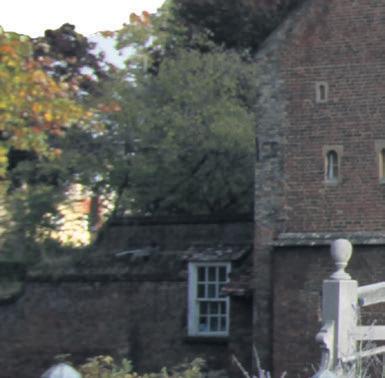

self to his studies, explaining later that “personal training at NASA was really easy compared to doing a degree at Cambridge!”
However, in the midst of these youthful hopes and lofty dreams, tragedy tore its way through the fabric of Foale’s life, as he reveals that what “really drove [him] beyond” while studying for his postgraduate degree in Astrophysics was the death of his brother and girlfriend in a horri c car accident. During a drive through summertime Yugoslavia in a British car, Foale told me that, while behind the wheel, a lorry swerved into the group, killing the passengers on the left-hand side. Somewhat murmuring, Foale bravely concedes that he “struggled with a lot of guilt problems”; the shock, he says, “stayed with [him] for decades.”
In the midst of his unspeakable loneliness, he expresses gratitude for those who supported him. Re ecting on a trip out to Wales with his professor Dr John Green and sessions where he coached him through challenging mathematics, Foale suggests that the human compassion from those around him allowed him to survive the rest of his time at Cambridge. e companionship of Stephen Fry’s drinking society – a ectionately nicknamed ‘ e Cherubs’ – was another place he found solace. But above all, Foale said that because he “couldn’t nd
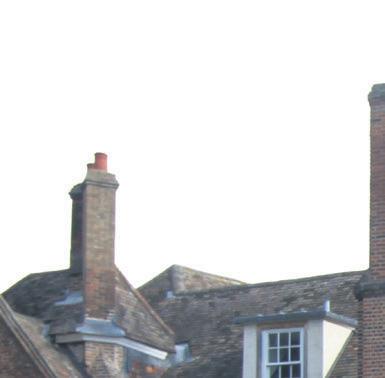


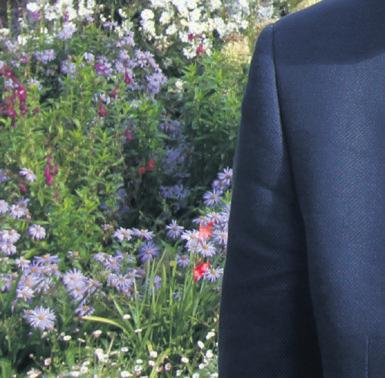
three years.
On getting into NASA, Foale took an unconventional route to the organisation. As part of his rst business venture, an undergraduate Foale had established an informal punting company with his pal one summer, where he served strawberries and cream to willing tourists. rough laughter, he tells me that “of course it was all violating health and safety and got shut down in two weeks.” However, it was in this unusual context that he had his rst encounter with the space programme, as he tells me that one day an American customer had admitted to working on the space shuttle – a revelation that shook the aspiring space cadet like thunder. “I almost fell o the punt!” he exclaims. It was this contact years later that would allow Foale an inside link, and the young man went to work later within mission control at NASA.
It was not until 1987, at 30 years old, that Foale was eventually selected as as an astronaut. After a few years of personal training and eager anticipation, Foale nally made it to space. When asked how he felt looking out, he professes that he was “stunned by the beauty of it”. In elaborate detail he paints a picture of his view of astral projections, the milky way, lightning ittering around the edges of black holes, the sight of moonlight shining o of the ocean, and the view of Earth at night lit up by city lights. Agreeing that he was something of a romanticist in his propensity towards gazing outwards “at every spare moment”, he



re ect upon the possibility of life beyond Earth. Foale, though not a religious person, suggests that his time outside of the planet made him “incredibly aware of humanity” and caused him to appreciate the wonder of Earth.
❝Lightning ittering around the edges of black holes, the sight of moonlight shining o of the ocean
Giving an account of his legendary experience working with the Russians for a mission onboard Mir space station later in 1997, Foale remarks upon the peculiarity of the situation he found himself in.
Something of a rst-hand witness to history, he explains his incredulity regarding the changes to US-Russian relations seen throughout his life, recounting how his “father had worked as an RAF pilot during the Cold War, when the organisation had planes geared with nuclear weapons towards the USSR”.

Living in Star City enabled the astronaut to learn the Russian culture and language, something that made him popular among his crewmates while in space. Jovially, he


recounts his experience xing toilets (eliminating the source of a mysterious “space rash” onboard), growing broccoli, and measuring the circadian rhythm of beetles as part of his time onboard. It was on this mission that Foale came once more into the clutches of danger. Recounting the infamous collision that occurred onboard Mir, Foale communicates how a hole ripped in the spacecraft, creating depressurisation and a major loss of oxygen. “I fully expected to die”, Foale recounts candidly. In these moments of what some might imagine as dizzying fear, for Foale “there was no panic,” completing the necessary tasks to try and save the team. After four hours of power outage, he explains how the crew had discussed the creation of a cunning plan to stop the tumbling of their craft by ring thrusts to stop their spinning. It worked, and all astronauts onboard endured to tell the tale. And yet, despite the challenges faced upon his time on Mir, Foale remains far from cynical, being thankful that he “learnt another culture, another point of view” as a result of his time working within an international space crew. Further projects, including six months commanding the International Space Station with cosmonaut Alexander Kaleri, allowed Foale to come to the realisation that “even though you had these profoundly di erent perspectives politically, culturally and even in your understanding of the past, you can still manage to get along on a personal level”.



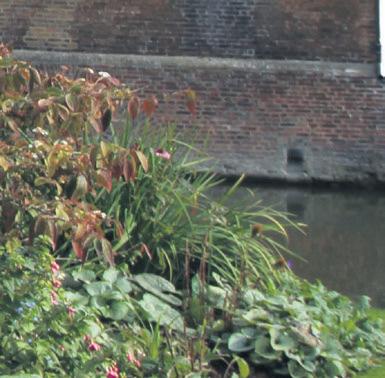
















anyone to replace his girlfriend Catherine” he “just completely buried himself in the physics”, and nished his postgraduate course within the prescribed would often ough he reflects wistfully upon the loss of this connection in recent years amid deteriorating relations with Russia, Foale remains on optimist regarding the future of inter-cultural space flight. He urges Cambridge students to get involved in space, arguing that the actualisation of your dreams is not as impossible as



As I navigate my way through the complex maze of cottages and battlements just off Bridge Street, I eventually locate the loafshaped house of Vona Groarke, writerin-residence at St John’s College and celebrated Irish writer in a wider professional capacity.
Situated between tasteful Kettle’s Yard prints and bookshelves lled to the nines, I was very lucky
ranging chat with Groake about her work at the college, the nature of her previous success, and plans for the future.
For starters, Groarke’s principal roles at the College are provision for students, for whom creative expression isn’t part of the formal curriculum, including, recently and notably, the Cambridge Group for Irish Studies. Groarke maintains her own writing alongside this work, which she acerbically refers to as her employment con-
tract’s “header”. Having commenced her role at St John’s in October 2022, Groarke highlights not just her pleasure at working within the college, but also creative partnerships forged externally: Professor Máire Ní Mhaonaigh, a colleague at St John’s and supervisor/lecturer in the eld of Celtic and Medieval Studies, and her students, assisted Groarke’s creative adaptation of the ninth-century poem ‘ e Lament of the Hag of Beara’, which culminated in her 14th book, Woman of Winter (2023). e ‘Hag of Beara’ is a mythic Irish goddess who, in the original medieval poem, laments her rapidly passing youth. Groarke tells me that this celebrated project, among others, would not have come about had it not been for the experiences and networks Cambridge provides.
examples of leading scholars of Irish literature who share Cambridge’s sphere of literary studies with Groarke.
❝
man Center Scholar, Groarke notes that this piece could “only have been [written] at this stage of my life”, and not a moment earlier. e experimental work, in her words, emerged out of the “dissolution of caution”, the ability to take a risk or, if you’ll indulge me one more description, a remarkable aptitude for spinning plates. It was only in the “doing” that her “intuitive sense of what [she] thought would work” was realised – quoting Roethke, a Pulitzer Prize-winning American poet, and also quoting Groarke: “I learn by going where I have to go.”

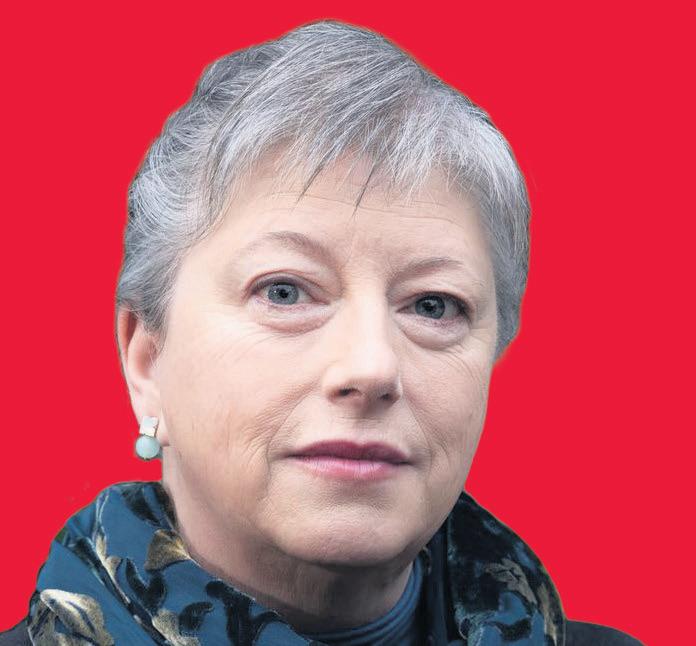

A key thread in our conversation was Groarke’s deft articulation of a “patchwork life”. A proli c artist for over 30 years, the chief pleasures of St John’s academic resources, Groarke outlines, lie in the conversation to be had with literature: that is, the “atmosphere of hard intellectual endeavour” present at Cambridge, with its wealth of resources, “foster[s] creativity.” ere was great pleasure to be had in Groarke’s description of her process when in residence at college – eight hours of the day are reserved for “privacy” and “seclusion”, with afternoons opening up to an atmosphere of “sociability and collaboration”, an atmosphere Groarke highlights as ideal.
Eight hours of Groarke’s day are reserved for privacy and seclusion
As well as being a thriving intellectual space, though, Groarke has found delight in Cambridge’s private and internal aspects, for example her mentorship of students, with all its “spectrum of regularity” and the freedom to try things out.
Returning to e Telling Life, produced in part during her tenure as an NYU Culllife”.
is seems particularly key due to the range of residencies Groarke has enjoyed over a long career: the Heinrich Böll Cottage on Achill Island, for instance, consisted of several weeks of total seclusion from the outside world. Another residency saw Groarke spend time at the New York Public Library, the product of which was 2022’s Hereafter: e Telling Life of Ellen O’Hara, a ery, form-mixing account of her grandmother’s emigration to New York in the 1880s, and subsequent expatriate life. Groarke nds inspiration both in Cambridge’s capacity and intellectual expanse. John Kerrigan (with Archipelagic English, 2008) and Clair Wills (Missing Persons, 2024), are good
All this to say that Cambridge’s “vibrant literary culture” proves that “the practice of writing has some value”.

Groarke is also frank about her status as an Irish writer working in Cambridge, sometimes drifting into thoughts of being an “outsider”, or perhaps not a “natural insider”. Yet it’s that kind of transient existence, she goes on to explain, which is a “great place for the creative mind to be” – gratefully “admitted to, but not dened, in the space one is placed in”. An instructor at Manchester University for over 17 years, frequent judge of poetry prizes and something of an Irish cultural ambassador, Groarke’s openness and impulse towards doing are, I think, useful lessons for anyone at any stage in their creative process.
❝
Remaining an outsider is a great place for the creative mind to be
We nish o discussing the future. ere’s the bare bones of a ninth poetry collection in the works, and a book of essays close to a comfortable revision space (Groarke is spending part of her summer at the houses of John Clare and omas Dorchester). Yet, regardless of what Groarke is working on, her playful relationship with language and texts will endure. When I ask her about what she’d like her legacy at St John’s to be, approaching her nal year of residency, we settle on “visibility” – for students rst and foremost, as a writer-in-residence really in residence, but also in the numerous other avenues Groarke has had the opportunity to explore while at Cambridge.
If the area of the outside square is 100cm², what is the area of the inside square?
What percentage of respondents successfully solved this?




Ananya Vijay rounds up the latest research from Cambridge scientists
Corals, cooling and clouds: protecting the Great Barrier Reef
Since 2016, the Great Barrier Reef has been subject to ve mass bleaching events. is is in comparison to just two in the previous 30 years. Coral bleaching involves the loss of algae residing in the corals, which results in them losing their characteristic colour and turning a ghostly white. Due to the symbiotic nature of the relationship, if this is prolonged, the corals have a considerably lower chance of recuperation. A catalyst for this is extreme heatwaves, which are now occurring more often and at higher temperatures due to climate change.
Dr Dante McGrath, a postdoctoral researcher at the Centre for Climate Repair, believes coral bleaching means soon “the whole [of the Great Barrier] reef could be lost”. In order to prevent this, he is working on a technique called marine cloud brightening. is involves a salty mist being sprayed into the atmosphere, providing a cooling e ect which o ers relief to the reef. As clouds at a low altitude become more re ective, a larger proportion of sunlight is allowed to be diverted into space.
Marine cloud brightening is not without its controversy though, as it has the potential to a ect weather patterns and climate on a large scale. erefore, it could cause an adverse effect in regions where the technique is not being applied.
McGrath and his team admit that this is somewhat a band-aid solution, as divesting from fossil fuels still needs to be the main focus in order to mitigate the e ects of climate change.
Cockroaches, conversations and collaboration: a night at the museum
e University of Cambridge’s Museum of Zoology hopes to foster greater interest in the preservation of biodiversity by allowing visitors to have conversations with the exhibits using AI. A collaborative e ort with Nature Perspectives, the AI technology allows the animals to talk to visitors about themselves and answer their questions, adapting their register and approach depending on the demographic with which they are speaking. Some of the specimens include a dodo skeleton, a red admiral butter y and an American cockroach. e focus is currently on observing how people interact with this technology, and whether it is e ective
Maya Kunchur looks at the world of Lord of the Rings
the perspective of an evolutionary biologist
Irecently watched the Lord of the Rings trilogy, and thoroughly enjoyed it. However, when I put my scientist hat on, several aspects of the fantasy world suddenly looked a lot less plausible, and it might not be for the reasons you expect. at being said, ora and fauna have undergone constant change before constructing the biodiverse ecosystems we recognise today, and several features of Middle Earth are surprisingly close to the Earth our ancestors walked.
Of course, half the point of fantasy is to forget reality and immerse yourself in a magical world. I appreciate that, but it’s interesting that a few aspects of Middle Earth are scienti c fantasy to us but were actually more realistic in ancient times.
In a world where eagles can converse with hu-
mans and cave trolls are a le-
gitimate threat, a giant elephant doesn’t seem like that much of a stretch. An elephant could just keep growing until it’s three stories high, right? Except scaling doesn’t work like that. With such a vast increase in body mass for the same anatomy, the surface area to volume ratio becomes hugely skewed. Physiological characteristics like sweat production, having legs thick enough to support its own weight, and blood pooling due to pressure changes would quickly become big problems.
But you might have heard about giant ancestors to extant organisms, like massive dragon ies (Meganeura) or two-metre-long millipedes (Arthropleura), and query how this was possible. In this era of megafauna, atmospheric oxygen concentration was higher than today, so the rate of oxygen uptake by di usion was greater. As organism populations grew, increased respiration across the planet led to changes in the relative concentrations of atmospheric gases. e upper physiological limit on insect body size has therefore decreased over time. Unfortunately, other megafauna such as the giant sloth likely went extinct due to hunting.
Flores were only one metre tall. Much like Middle Earth, di erent populations kept to themselves, but this time for thousands of years. When they did meet, war was perhaps not fought with swords but with pathogens; it’s believed diseases spread by sapiens played a signi cant role in the extinction of Neanderthals. Having lived longer in the hotter, tropical African climate, sapiens likely adapted immunity to a wider range of diseases over time. When they spread upwards into Europe and met the Neanderthals, both populations would have su ered from alien diseases spread by the other, but Neanderthals may have su ered worse for this reason.

Maybe it’s because I’m reading Jonathan Kennedy’s Pathogenesis, but as I watched elves, dwarves, humans and various other creatures greet each other and mingle in large populations I wondered about the spread of disease.
ough the coexistence of multiple intelligent species seems quintessentially Middle Earth, it’s actually not so far from the life our ancestors lived. Homo sapiens inhabited Earth at the same time as other types of humans, such as Homo neanderthalensis. ere were no dwarves, but Homo oresiensis from the Indonesian island
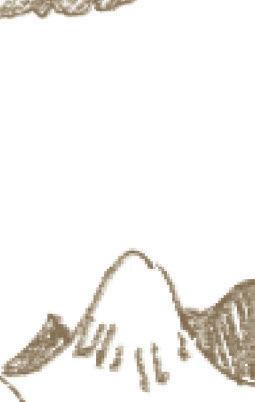
at fostering an interest in nature, although the team hopes that in future it could be used to subvert common preconceptions about these animals. e co-founder of Nature Perspectives Gal Zanir desires this technology to be implemented as a representative of nature in “legal processes, policymaking and beyond”.
Proteins, plasma and programming: weaponising T cells for cancer treatment
A new cancer treatment has poten-

tial to save the lives of people su ering with cancer who previously had little hope of recovery. Cancer cells are notoriously good at proliferating, undetected by the immune system. However, CAR-T cell therapy can cure more than double the number of patients su ering from particularly aggressive forms of cancer. e process involves T cells, a type of immune cell, being harvested from the blood, and then reprogrammed to carry a protein known as chimeric antigen receptor. is protein can recognise proteins speci c to cancer cells and bind to them. e reprogrammed T cells are then multiplied and reintroduced into the bloodstream. As a result, when a modi ed cell de-
Several characters in Middle Earth are the product of interbreeding between the multiple intelligent species. ere’s just one problem with this: it worked. Classically, a species is de ned as members of a group which can freely interbreed to produce fertile o spring.
So if Aragorn is only half human, perhaps elves and humans are not distinct species?
Once again, there are parallels to our world. Homo sapiens and Homo neanderthalensis are widely considered separate species, but modern humans have between 1 and 4% Neanderthal DNA and many of us possess Denisovan genes. Clearly, successful crossbreeding occurred without ending the family line. is is one of many examples that make de ning species so tricky.
So, while your great-great-great... great grandma was de nitely not the elf Lady Galadriel, she might have been a Neanderthal. Instead of riding a giant elephant, let’s imagine she once saw a giant sloth. Next time you read a fantasy book, enjoy pondering what else she could have plausibly experienced.

tects a cancer cell, other parts of the immune system are signalled and they e treatment doesn’t show e cacy for some blood cancers. When treating myeloma, a cancer of the plasma, the CAR-T cells killed some healthy brain cells instead of cancerous cells. As a solution, Dr Mike Chapman, the brains behind the operation, proposes the idea of developing an “on-o gate”, which makes the CAR-T cell switch o if it detects a cell which should be left intact. However, the fact that with CART therapy what is predicted “actually does happen” is extremely promising


Ellie Robinson explains why the changing seasons might have you feeling down, and what you can do to look after yourself
While the encroaching winter months promise cosy out ts, hot chocolates and lovely festive lights in the town centre, for many of us the darker, shorter days also threaten lethargy and lower moods. What is it
about the changing seasons
able difference in our
The ‘winter blues’, or ‘Seasonal A ective Disorder’ (SAD) as it is
referred to at the extreme end, is our brain’s response to a lack of sunlight. e limited natural light in winter months disrupts the function of the hypothalamus, the region of the brain that controls our sleep, mood and appetite. Our body’s circadian rhythm, or ‘body clock’, relies on light cues to tell us when we should be awake or asleep. When the days get pothalamus produces greater amounts




shorter and the mornings darker, the hyof melatonin, the hormone that con-
trols sleep, making us feel more tired. Reduced exposure to sunlight also causes the hypothalamus produce lower levels
of the neurotrans-
mitter serotonin, which not only causes feelings of depression but also compounds feelings
of tiredness by reduc-
It is thought that SAD is rooted in evolutionary processes designed to help us survive through the colder months, where food was scarcer and our bodies had to expend
more energy keeping warm. is exmore instanc-
❝
Decreased exposure to sunlight has been shown to correlate with de ciencies in intellectual function
winter months increases the chance of babies being born in late winter–early summer, where they would have been more likely to survive. One study also suggested that feelings of depression may have improved pair-bonding and care within family units through the winter.


Decreased exposure to sunlight has been shown to correlate with de ciencies in intellectual function, speci cally memory and the ability to sustain attention. is is likely to be a further product of increased depression and tiredness rather than a separate e ect, but is nonetheless an unwelcome outcome, particularly as we navigate the unforgiving Cambridge workload.
northern re-
plains why there es of SAD in gions such as Scandinavia and Alaska,
tions are more extreme, with winters lasting for longer and resulting in fewer daylight hours.
SAD is physiologically similar to mammalian hibernation in a number of ways, notably increasing tiredness and causing a reduction in heart rate. Su erers also typically gain weight, often experiencing increased cravings for carbohydrate-rich foods in order to build up stores of slow-release
where seasonal uctuaenergy. Further to this, seasonal de-
pression confers a genetic advantage in temperate latitudes; decreased libido in

So, what can we do about it? Luckily, there are simple ways we can mitigate the e ects of ‘winter blues’. Since SAD has been shown to be related to daylight levels and photoperiods, we can help combat it through exposing ourselves to light in these dark mornings. Experiencing light soon after we wake up prompts our bodies to release more serotonin, and also helps to reset our circadian rhythms. Whether you do this through investing in a lightbox that simulates daylight, or trying to t in a quick morning walk when you get up, this has been shown to make a tangible impact on mental wellbeing. It is also important to keep to a regular sleep schedule to keep a stable body clock. Finally, if you do nd yourself feeling the e ects of seasonal depression, don’t hesitate to seek out welfare support. Prioritise time with friends, exercise, do whatever makes you feel better. Cambridge may feel all-consuming, but your mental health comes rst.


ACROSS
5 Of the region that includes Lithuania, Latvia and Estonia (6)
6 Set of steps to follow (6)
9 Subtle di erence (6)
10 Upwards punch (8)
11 Numerical information (4)
12 Acrobatic ip/roll (10)
13 Between reigns, 1649-1660 (11)
18 Of foreign relations, not causing o ence (10)
21 Exceptional person, symbol (4)
22 Pink bird (8)
23 ______ Reagan (6)
24 Grimaces, shows pain (6)
25 River running through New York, rowing shell manufacturer (6)
DOWN
1 Banana-like fruit (8)

2 Small dots on screens (6)
3 Jump ahead of, vault over someone (8)
4 Group of Nepalese and Tibetan people (6)
5 Landlocked country north of India (6)
7 ______ or nothing (6)
8 Large group of starlings (11)
14 College with an outdoor pool (8)
15 Organise workers into a trade group (8)
16 Weeping ______ (6)
17 City in the south of France (6)
19 Express deep sadness (6)
20 College directly west of New Museum site (6)
5 Of the region that includes Lithuania, Latvia and Estonia (6)



6 Set of steps to follow (6)
9 Subtle di erence (6)
10 Upwards punch (8)
11 Numerical information (4)
12 Acrobatic ip/roll (10)
13 Between reigns, 1649-1660 (11)
18 Of foreign relations, not causing offence (10)
21 Exceptional person, symbol (4)
22 Pink bird (8)
23 ______ Reagan (6)
24 Grimaces, shows pain (6)
25 River running through New York, rowing shell manufacturer (6)
DOWN
1 Iran and Oman broadcast Romance language (8)
2 Replicas are seldom complex (6) 3 Bird has fantastic breast (5,3) 4 What broken clocks might do, sounding like acid (6)
5 Crazy Cupid's lover has a ring for Echo (6)


7 Experimenter needs to shave end o balls, right? (6)
8 A new page on Excel? (1,5,5)
14 Despised a committee vocally (8)
15 Cow crossing two universities (8)
16 Mole-like animal - dead clever! (6)
17 Lesbian-repelling bachelor goes crazy for contact solution (6)
19 Putting university over sex results in marriages (6)
20 Apparently you French do witchcraft? (6)
Answers to puzzles on Instagram @varsitycambridge
CRYPTIC & SUDOKU BY SOPHOCLES
QUICK BY AXEL L
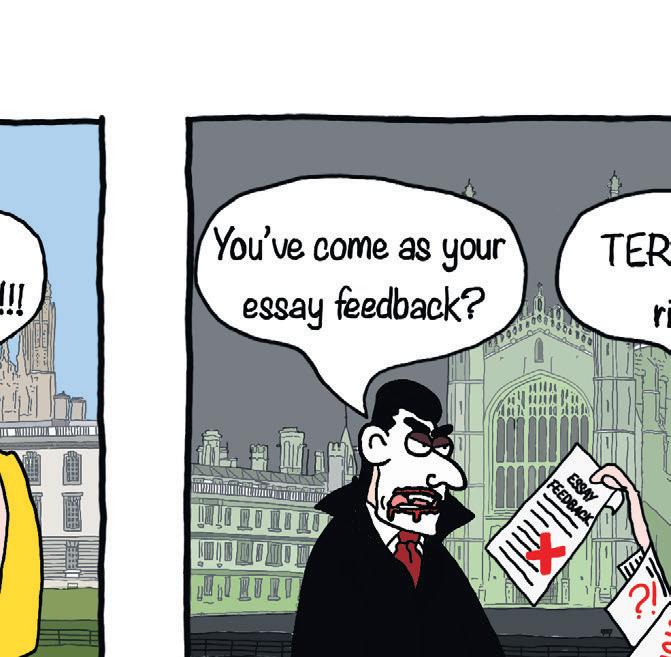





Resident Archivist Vialli McComb investigates the spirited student responses to Cambridge’s controversial speakers
While many Cambridge students might consider the scariest thing lurking in our city to be 9am lectures or the price of a pint, back in the 1950s, Cantabrigians were being kept awake by something far more sinister than essay deadlines… Just last year, Cambridgeshire Live dubbed Abbey House the “most haunted house in Cambridge”, and, given the stories relayed by Varsity in 1955, this seems to be an apt description. Varsity ominously announced that “Today the spectre of Abbey House has returned”; a recent occupant of the haunted wing of the house, built on the site of an old abbey, woke up “to nd herself being smothered by a tray being pressed hard into her face”.
e Society for Psychical Research had recently spent a week “night-watching” at Abbey House and, although they gathered no concrete evidence, a member remarked that there was “certainly something there”. A second year Queens’ student also recounted his recent sighting of an apparition; he admitted to Varsity that “it might have been a projection of [his] mind”, however he “think[s] it was too concrete for that”.

e 1955 Varsity writer revealed the multitude of supernatural occurrences which have tormented the residents of Abbey House over the centuries since its foundation circa 1620 following the dissolution of monasteries. e children of a Pembroke Fellow were witnesses to a range of sinister happenings during their 1904 tenancy in this haunted house. ey recalled being “repeatedly nursed to sleep by the ghostly gure of a nun sitting at their bedside”.
Cambridge has long been a hotspot for paranormal investigation and supernatural scholarship. is is primarily thanks to the work of the Society of Psychical Research, founded in 1882 with Henry Sidgwick as the rst president. An October 1951 Varsity article quotes a Mr Elliot O’Donnell who warns this society of the danger of supernatural investigations due to the “malignant” potential of spirits.
A November 1951 article provides an in-depth overview of Cambridge’s Society of Psychical Research which scorns “rejection and credulity” as its “enemies” since there exists now “such a wealth of evidence that all but the fanatically prejudiced must accept as fact the occurrence of PSI phenomena”.
is Varsity article invited students to participate in a “telepathy test” where they needed to use their imagination to guess a secret sequence of symbols, and then return their answers to Varsity to discover their telepathic potential. As Halloween spirits awaken and winter descends, it is perhaps advisable to sleep with one eye open and not to shrug o that eerie feeling of a gure lurking in the shadows.

Following the shattering of an Ai Weiwei sculpture, Beth Scott looks back at the artist’s own act of destruction
Tpreciate their art being destroyed. Not Ai Weiwei, who condemned the action of Pisvejc, nor the Han dynasty craftspeople. In some respects, the actions of Pisvejc and Weiwei appear rather similar, both destroying an artwork without the consent of the artist: acts of destruction which have artistic and
historical signi cance, warping the meaning of the


his summer, Ai Weiwei opened his new exhibition, titled ‘Who Am I’, in Florence. It marked the last showing of Ai Wei Wei’s work ‘ e Porcelain Cube’ , a porcelain sculpture resembling a cube made of PVC piping, decorated with traditional blue coloured owers. More than a metre cubed, it was a testament to the skill of porcelain makers, and an interesting reimagining of a thousand-year-old ceramic practice in the context of modern construction, as well as being a beautiful piece of porcelain itself. ‘ e Porcelain Cube’ was destroyed by Vaclav Pisvejc, a 57-year-old Czech man, during the private viewing. Pisvejc pushed over the artwork before being tackled by bodyguards, but the damage was already done. e shards were cleaned away and replaced with a life-size print of the artwork for the duration of the exhibition. e vandal, Vaclav Pisvejc, regards this destruction as art-making. In fact, the smashing of ‘ e Porcelain Cube’ comes after a series of acts of vandalism by the artist: setting re to a copy of ‘David’ in Piazza della Signoria, climbing the Hercules statue in Florence naked, spray painting a work by Urs Fischer, and attacking artist Marina Abramović at a book signing by breaking a painting over her head. It certainly seems to be a dangerous time to be an artist, or artwork, around Florence. Despite racking up nes and prison sentences, Pisvejc appears undeterred by punishment, committed to his ‘artistic practice’ of damages. His targets do not appear to be random, nor his actions without thought. In the case of e Porcelain Cube’ , Pisvejc appears to be imitating Ai Weiwei’s own artwork: ‘Dropping a Han Dynasty Urn’ , 1995. In this work, Ai Weiwei drops an urn, the action recorded by three stills: held; falling; shattered. Just like ‘ e Porcelain Cube’ , the two-thousand-year-old urn is reduced to shards, the action permanent and irreversible. While ‘ e Porcelain Cube’ could be reproduced, the Han urn was consigned to history, along with its makers.
Weiwei’s destructive act is a commitment to challenging oppressive systems of power
by history, calling for cultural and societal change. His action challenges the idea that when something is old and historical, it is valuable, important, and good. In destroying it, he calls for a re-evaluation of value. Referencing the destruction of antiquities under chairman Mao, he claims that the old culture must be dropped, and a new one ushered in. e action itself has power: the shock of destruction and its subversion of norms of art ownership is a radical act. Pisvejc’s destruction has the same shock value, but none of the cultural meaning: ‘ e Porcelain Cube’ is neither historically signi cant (yet), nor culturally emblematic. Rather, ‘ e Porcelain Cube’ itself was already a subversion of traditional porcelain making. His action is therefore without a successful or obvious point, beyond the act of vandalism itself.

However, Ai Weiwei’s destruction is displayed in his current exhibition in Florence, while e Porcelain Cube is replaced by a print of the sculpture still standing. Ai Weiwei’s destruction is elevated

It is fair to say that neither artists would ap-
as art, Pisvejc’s condemned as vandalism. Is it ownership, not consent, which distinguishes the

dynasty urn, the expectation of ownership of artwork is still one of safeguarding. Look at e Fitzwilliam Museum in Cambridge for example, which houses hundreds of stoneware ceramics, many unremarkable, behind glass, kept far from risk of destruction. Even in people’s homes, art is placed on shelves, out of the reach of children and pets, or hung on walls in glass frames, shielded from the elements. Further, an ob-
ject like the Han dynasty urn belongs to China’s cultural heritage, which is owned by all. Certainly, by smashing the urn, or any artwork, Ai Weiwei subverts the expectations of art ownership and its moral expectations, destroying a piece of cultural
But this is exactly what Weiwei wanted to do. e urn is an emblem of a Chinese culture founded in history. In smashing the vase, he symbolically destroys the precedent set
Art should never be destroyed without point or purpose, just as art should be made with a purpose. Ai Weiwei’s ‘Dropping a Han Dynasty Urn’ , while a radical and destructive action, is re ective of the artist’s commitment to activism. e artist’s investigation of government corruption and cover-ups, notably the death of students due to earthquakes in the Sichuan province, has led to him being beaten, doxed, and detained by the Chinese government. is just one part of Weiwei’s continued commitment to challenging oppressive systems of power in his art and life. He destroys the old to call for a better new: if we
Dropping a Han Dynasty Urn commitment life. a always safeguard the old, what room do we leave for






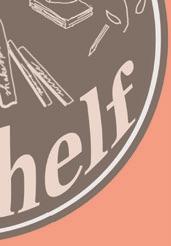
You crash over the trees, you crack the live branch— the branch is white, the green crushed, each leaf is rent like split wood.
You burden the trees with black drops, you swirl and crash— you have broken o a weighted leaf in the wind, it is hurled out, whirls up and sinks, a green stone.
H.D., ‘Storm’ (1916)
Madelaine, Arts Editor:
Hilda Doolittle (writing under the fragment ‘H.D.’) was known primarily for her work as an Imagist poet in the early part of the 20th century. She met Ezra Pound when she was fteen (he was the one who would give her her pen-name, slashing out ‘Hilda Doolittle’ for ‘H.D., Imagiste’ with a sort of fascist abandon), and would publish ‘Storm’, with his edits, in her rst collection. In the poem, wind and thunder shock about. A tree folds in on itself, and it does the same in verse: ‘each leaf’ is like ‘split wood’, but the marriage of parallel images is so clinching, here, that we believe in it – like two drawings becoming one above a lightbox. I still don’t quite know what to make of the ending. It sounds like an o ering to my ears, even as the ‘green stone’ sinks away from grasp. But I suppose this is the poem’s paradox –preservation and loss folded together. It’s the paradox of the fragment, too.
Whenever I stumble across the Imagists, the Futurists, or the Vorticists, I’m transported back to Lecture Block Room 3, Sidgwick Site, and my rst term at Cambridge. My fresher self was endlessly impressed by the vivaciousness of the imagery, awed at the idea of poets furiously stamping themselves into words, machine-like. Now, though, my tastes have changed, but this H.D. poem, new to me, beautifully tempers the male aggression of her peers. Here, the forcefulness is not found in the poet but is instead located in nature, which seems to me to be the ‘you’ addressed by H.D., as she marvels at its beauty and power. A poem for the departing autumn and approaching winter, to remind you to look outside your window and take note that the world is not passive or static, but conscious and moving.
Emily Cushion explores Forster and Hughes’ romantic yet dissatis ed portrayals of Cambridge life and asks why everyone wants to write about our university






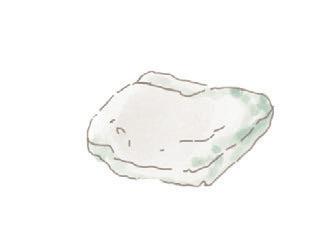
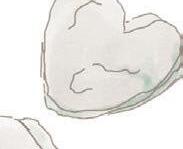

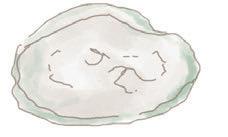

TJESSICA LEER
he so-called ‘Cambridge experience’ is romanticised globally: each year we see a repeated pattern of teenagers spending years prepping for their application, and tourists ocking to the same revered colleges for an Instagram pic. But overwhelming workloads and intense academic scrutiny, Cambridge students often become disillusioned with something that was once their dream. While this is certainly a current problem, a literary glance can lead us to believe that student dissatisfaction might have clouded Cambridge for years.
an
King’s alumnus E.M. Forster, an Edwardian era author, took inspiration from his own Cambridge experience in writing what was arguably his magnum opus –the hard-hitting and revolutionary novel Maurice. Despite having been written over a century ago, the novelwas already attempting to deconstruct some of the myths about student life in Cambridge. At Forster’s time of writing, many boys from a uent English families were expected to continue their education at Oxbridge, which itself was merely a stepping-stone into a career they were destined for since birth. In attending the university, Forster claims Maurice is “stepping into the niche that England had prepared for him”; while this is an action, it’s a relatively passive one – he simply does what is expected of him. Moreover, Cambridge appears to be more of a
familial ambition: upon his expulsion, Maurice’s mother dismays, “Oh Morrie, my darling — and we did so look forward to Cambridge.” Forster tells us this was her dream, rather than her son’s. ese pressures can often manifest themselves in ‘imposter syndrome’, a familiar sensation for many Cambridge students. While this potentially pretentious term might not have been around in Forster’s time, Maurice certainly feels his own version of it: “ e sounds of the May term, the scents of the Cambridge year in ower, oated in through the window and said to Maurice, ‘You are unworthy of us.’” is personi cation evokes the vividness of imposter syndrome: Forster accurately relates it as an encompassing emotion transcending logic and reason, thereby suggesting something far more deep-rooted. Maurice is a novel centred on belonging, with a protagonist constantly reckoning with his own place in the world. Early issues of displacement in Cambridge foreshadow more escalated troubles – Maurice later deals with the consequences of being gay in Edwardian England. In laying Maurice’s roots of not belonging in Cambridge, Forster pinpoints that the issues of imposter syndrome and disillusionment aren’t just university-based, but carry forth in reality.
While Maurice is a particularly apt literary example of student dissatisfaction, it isn’t the only one – Pembroke’s Ted Hughes poeticises this in ‘God Help the Wolf After Whom the Dogs Do Not Bark’: “ e Colleges lifted their heads. It did seem / You disturbed something just
❝
Oxbridge was merely a steppingstone into a career they were destined for
perfected.” Here, with Newnham alumna Sylvia Plath as subject, Hughes humanises Cambridge to demonstrate its disapproval of her – we develop a similar sense of her lack of belonging. Hughes goes further in ‘X’ to establish an outright rejection of the University: “Cambridge was our courtship. / Not the colleges, or such precincts […].” ese lines allude to the city resonating far beyond its academia – Hughes seems to favour the town above the gown in this display of disenchantment. Many of us might take comfort in the fact that, as one of England’s most renowned poets to date, Hughes only achieved a third-class degree at Cambridge, though his poetic legacy is intrinsically connected to his time there. Academia should not be the sole part of our Cambridge experience.
e endurance of romance within works attempting to deromanticise Cambridge ultimately implies that, while student disillusionment must be acknowledged, the Cambridge experience is one like no other. It’s something that has changed lives since the University’s establishment, and its literary legacy, despite revealing these irrefutable aws, inherently asserts a justi able idealisation of the University. Cambridge, as a town, university, and experience, begs to be written about, and thus memorialised through this literature. Perhaps this can be considered a romanticisation in and of itself.




















There’s a clip I love from the 1970s of Jane Birkin emptying the contents of her handbag. Today, if you watch a Vogue ‘What’s In My Bag’, you will see celebrities pick out a Gucci purse, a spare pair of Jimmy Choos, and the keys to their Benz. It’s perfectly manicured, and ingratiatingly performative. What I love about Jane’s bag is that it was beautifully lived in; a urry of notes, lipsticks and cigarettes spilled out of a leather bag which looked like it had survived girls’ bathroom trips, a sticky pub carpet, the sweaty underground and a battering by the English rain. at’s what most of our bags are like: messy, but a micro museum, a compendium of lovely little receipts of who we are. Nothing you need, but everything you want.






















is that, like what people wear or how they speak, what we lug around in our bag says a lot about who we are. Humans are super nosy and we like to compare ourselves to others. None of us really know what we’re doing. We want to know if we’re wearing the ‘right’ shoes, carrying the ‘right’ essentials in our bag and, fundamentally, if we are managing our daily lives ‘right’. So, that was a long way of saying “please excuse the chaos of my bag”. I am a ‘just in case’ person in all respects, which is why my bag is permanently overflowing. I thought it would be a fun, and very revealing, exercise to empty my bag and take stock of what I carry around (and don’t carry around) to survive life at uni.

I love watching ‘What’s In My Bag’ videos. Like makeup tutorials, hauls, apartment tours, GRWMs, or vlogs, they formed most of the cultural consumption of my years as a teenage girl. I think historians of the future will be a bit ba ed trying to understand why, at the turn of the 2000s, there has been such a proliferation of obsessive self-introspection, with content creators building whole careers on analysing the minutiae of their material lives. My theory

the autumn weather has set in. Speaking of which, I was chuckled to see both sunglasses and a heavy duty umbrella at the bottom of my bag. Both, I would say, are critical to survive the trials of an English autumn.





A planner: the best weapon to prevent a Michaelmas meltdown. I use a paper one, mainly because I like to write lots of ‘to do’ lists (which always start with things I’ve already done). When the heap of reading lists and essays seems insurmountable, the simple act of ticking things o gives me just enough dopamine to bring myself back from the brink of a degree crisis (seriously, you should try it).
I arrived tired and hungover at a supervision and, reaching for my laptop, found that my bag was empty aside from a whopping six lip products and a wine bottle opener.When I had to recall a week’s worth of reading from memory, I really learnt my lesson. Still, I like to think it shows I have my priorities in order.

























Survival Kit




I carry a red purse which I stole from my mum, which is stu ed full of receipts, and my greatest asset in this bag: my loyalty card collection. My purse serves one main purpose; to hold cash for nail appointments.
Some colleges are graced with lavish cooking spaces … and some colleges very evidently are not. Furnished with only a kettle, a microwave, and a toaster (that was incapable of toasting), when I walked into my rst-year kitchen, I swiftly realised what category my college fell into. With my minimal cooking skills, I didn’t have a choice when it came to hall food. By Easter, I had reached a breaking point; there are that many potatoes a girl can take. Let me get one thing straight: I have always loved the microwave. e mysterious black and silver rectangular box through which 900W of raw power courses is, to me, the forefront of technological innovation. In retrospect, I wish I had taken more advantage of this sleek and glossy appliance; in preparation for next year, I have compiled and tested a few microwave recipes to help myself


e Michaelmas



ree packs of ibuprofen, hand sanitiser, a used packet of paracetamol and a mountain of tissues immediately caught my attention. Despite going into second year, I’ve not yet shaken the curse of interminable freshers’ u. I have essentially become a walking medicine cabinet now














Cambridge Basics Laptop, a single pen, Camcard. at’ll do. Occasionally, I decide to go rustique and take notes by hand. en I uncover this plethora of indecipherable, un led, and co ee stained pages stu ed in the corner of my bag, and remember why it’s a bad idea. To those soldiers who always do their lecture notes on paper, I bow down to you. It will never be me.




Everyone has their non-negotiables. Mine is carrying at least four lip glosses, just in case. Once, carry



Treasures and Trinkets
























Imaan Bilgrami puts gyp-friendly recipes to the test








and my fellow hobless students evade the potatolled fate that their college has ordained for them.
Scrambled Eggs
Ah, the things I do for Varsity. I will admit, as much as I love microwaves, and you know how much I love microwaves, I was worried by the




prospect of cooking eggs in one, but the scrambled (reconstituted) eggs at Sunday brunch are simply not enough to pull me through. is recipe is simple: microwave the beaten eggs and milk for two 30-second increments and then extra 15-second increments, scrambling them in between until they reach the desired consistency (I only needed one extra increment). Whilst the eggs did cook, unsurprisingly they too are texturally de cient, leaving me wondering whether brunch eggs are just microwaved in the rst place. But if you are craving your sulphurous x, with some cheese and herbs, this will de nitely su ce.
After making this recipe, I had a clear vision as to what Michaelmas has in store for me: lots of microwavable rice. Not only are you getting in the right balance of protein, carbs, bre etc, but the beauty of the rice bowl is that it is completely customisable. While the recipe that I have attached is Japanese-style, mixing wasabi, rice, tuna, and avocado, you are welcome to combine your new microwave egg-making skills with the rice (something I will refrain from doing), create a veggie-style bowl, or even branch out with some quinoa if you are feeling particularly edgy. Test out your chef skills in the Cambridge culinary wilds!
Lucky crystals, essential oils, cheeky notes from friends and feminist literature; if it would put me on trial for witchcraft in the 17th century, it’s going in my bag. Some of this miscellaneous paraphernalia has been clogging it up for years. A plain black TK Maxx special; I bought this bag when I was twelve, but it has seen me through every era of secondary school, sixth form, and now university. It is de nitely on its last legs; the straps are fraying at the edges, the leather has lost its shine and the zip is broken. But I have the curse of being a sentimental, nostalgic hoarder; I will not be getting rid of this bag, or any of its eclectic contents, anytime soon.
Dearest reader, I will not beat around the bush with you: I have placed this meal last because it’s the most disappointing. Whilst it promises to be nutritious and the ingredients are easy to source, after much experimentation (and many burnt batches–my nose is still acridly assaulted whenever I walk into the kitchen), I could not get the risotto to cook properly. Either undercooked or overcooked, just like in my academics, I found myself chasing unattainable perfection (call me a culinary Sisyphus). However, there is certainly potential here, and if you have a deadline to procrastinate, I would certainly recommend giving this risotto a go. Worst comes to worst, you can always sprinkle lots of parmesan on top. Lots.
I hope, dear reader, that in my microwave endeavours, I have found something to capture your imagination. Whether it be the simplicity of the scrambled eggs or the versatility of the rice bowl, I believe that there is something here for all culinary palates. Cooking at uni (if you can call this cooking) is not only a way to make food that you actually like but also a means of dividing your day and putting your mind to something other than work without feeling guilty. And who knows, you might just become enraptured by the marvels of the microwave.
Bex Goodchild traces her diary all the way back to her teenage years
Sometimes, at the most inconvenient of times, I rediscover my old diary and spend hours icking through the pages. If I told you that I started it in Year Nine and nished it after my A-Levels, you’d probably be pretty impressed with my level of commitment. What I’d most de nitely leave out of that conversation is how wildly inconsistent those diary entries were. With the majority of pages beginning with some variation on “So, It’s been a while”, my life between the ages of fourteen and eighteen ts into one singular notebook. Give me some credit, though – I tried! Did you even keep a diary? Yeah, thought so. Let’s keep this a judgment-free zone. From crushes to friendships to a lovely to-scale drawing of my retainer, it’s not the most thrilling of reads. I nd myself ghting the urge to curl up into a ball and grit my teeth as I read a particularly cringe-worthy extract. If you think I’m being dramatic, try reading this genuine defence of one of my Year Nine crushes: “he doesn’t make racist or o ensive jokes and is quite decent I think”. e bar was so low. So why, if I have such an extreme reaction to my diary’s content, do I read it more often than my lecture notes?
Typically a diary is a ‘for my eyes only’ situation, but I distinctly remember writing my diary for others to eventually read. Perhaps I didn’t trust the notebook’s imsy lock,
or maybe it was a plea for attention or possibly I had a premonition that I would one day be sharing it with Varsity … regardless, there is a distinctive lack of deep dark secrets (not that I had any), a multitude of compliments to various friends and family and a sprinkling of self-depreciation. Would I have been embarrassed if my dairy had been shared around the school?
Most de nitely. Would I have secretly hoped such an event would place me right in the centre of a real-life teen rom-com?
I guess I'm a bit obsessed with my past. Does that make me a

Duh! At the time, subconsciously writing for an audience meant mak-

ing a cooler, more interesting version of my life. Reading it in 2024, all attempts at ‘cooler’ and ‘more interesting’ are exactly what makes my toes curl. While I can’t escape how absolutely mortifying it is, my daily musings are undeniably hilarious to
Take my irrational, and completely absurd, fear of height-involved games and icebreakers: “We had to line up in height order (worst thing ever) so it was really awkward. I was not with my friends as they are all average height”. Though I’m proud to say both my height and

con dence have grown, I still take myself by surprise: “So I had school again. is morning I actually got up on time!”. I will always be a sleepy girl. What I’ve left out of these quotes is how horrendous my spelling was at the ripe age of fourteen. Some of my favourites include my
“chrush”
“smieles” at me and my “orphodontist opi-
ontment” where I “reilised” I needed braces. I like to think my spelling has somewhat improved, though autocorrect has lent a hand. I think the main reason I nd myself reaching for the diary is nostalgia. ere is something so fascinating about reconnecting with a di erent version of myself. I guess I’m a bit obsessed with my past. Does that make me a narcissist? Potentially, though I’d prefer to brand myself as a memory hoarder. I’m not particularly precious about ob- jects but I have an enormous collection of pictures, videos and diary-esque writings – you should see my Snapchat memories. Change, while constant and necessary, will always be bittersweet. Once a moment is over, we no longer own it. It’s the classic ‘sad that it’s over, happy that it happened’ spiel. I’m sure everyone has experienced those moments of introspection: standing with a group of friends, singing your heart out at a concert, sitting alone watching the stars. It’s your own movie moment where you remember this is happening right now and soon it won’t be. It’s not sad, really – I nd it quite peaceful. One of my last
▲ LAURA FORWOOD
if I have such an extreme reaction to my diary’s content, do I read it more often than my lecture notes?
diary entries (written in the middle of the night after nishing the series 2125 – if you know, you know) sums this up: “I am truly beginning to feel what bittersweet is. That mo- ment where something ends. You are glad it has hap- pened but sad you are leav- ing it behind. The moments where you reflect on the past while looking to the future and being within the present. Bittersweet is beautiful and I crave it and hate it. It is heartbreaking but comforting. It hurts and you smile. It is very human and I like it. My heart hurts to think about how time is passing. e moments that feel like they will last forever will move on. It is running away from us and becomes only a memory before we even realise. Some we hold on to and treasure and some are lost but I think they must all stay within us somewhere.”
Clearly, a midnight poet in the making. e early morning hours always reveal the pretentious parts of my personality. You just know I spelt ‘smile’ and ‘realise’ wrong too…
Sharleen Opia explores how Newnham graduate Talulah’s debut EP weaves genre-blending sounds, collaboration, and a bold focus on minoritised languages in the UK music scene
alulah, a recent History graduate from Newnham, is a multi-faceted sound artist whose creative work encompasses DJing, sound design, and singing. As a DJ, Talulah is known for their e ortless blends: describing their sound as “genre-blending,” they mix songs from across the globe and various genres to create eclectic yet uni ed experiences at student events like ArcSoc, as well as at Green Man Festival this past summer. ey have also worked extensively as a sound designer, including working for Cambridge theatre productions such as the critically-acclaimed 52 Monologues for Young Transsexuals, which had a successful run at Soho eatre. When asked which of their artistic practices resonated most with them, they explained that music-making is “closest to [their] heart” because it allows them to bring their “own vision” to life. Last month they released their long-awaited debut EP, Solas, a body of work that brings together their diverse artistic interests, encapsulating the unique nuances of their sound.



want to experiment with,” and they began all their studio sessions by listening to music they enjoyed with their collaborators.
❝
The key part of music-making is sampling everything until you find the ultimate recipe you want to experiment with

wrote it alone at the piano, as the words began “ ooding out of [their] subconscious.” Translated as “let me cry,” the song depicts a relationship marked by “cycles of one-sided support.” It portrays someone who “doesn’t want to give up on someone else, even though it doesn’t feel good or healthy,” asking for “one night to cry before they get up the next morning and do it all again.”


❝
Music is a universal language, always in movement

Talulah’s journey with singing began in traditional Welsh choirs, meaning their relationship with singing started in a culturally collaborative community setting. ey continue to emphasise the importance of collaboration across their artistic pursuits. eir debut as a solo artist came with the Welsh-language song ‘Byth yn Blino’, a stunning track featuring enchanting orchestral sounds adorned with divine vocal runs – it feels like melting into a meadow. Later in the year, they released ‘Slofi’, a bilingual track that blends electric and acoustic guitar elements to create captivating dream pop. e single cover features a person underwater, visually re ecting the angelic melodies that ripple like water throughout the track.
Solas, or ‘solace’ in English, is a ve-track EP created across various cities and landscapes, tracing Talulah’s “experiences of and meditations on power, place, language, and identity”. To them, “the key part of music-making is actually just listening to existing music – sampling everything until you nd the ultimate recipe you




as ment.”
e EP begins with the track ‘Suo’, a natural soundscape that dissolves into lush guitar arpeggios and dreamy, layered vocals resonating with reverb – a gentle crescendo leading into the following tracks. Ending with the sound of downpouring rain, ‘Suo’ blends seamlessly into the crashing waves that introduce ‘Galaru’. e way the tracks ow into one another is reminiscent of Talulah’s DJ mixes – a sonic journey where elements merge and transform. e EP’s single, ‘Galaru’, comes next. Its title translates to ‘mourning’ and features “mantra-esque” statements asserting “that someone was out there mourning my love, presence, and care,” Talulah explains. Within its vulnerable lyrics lies a “con dent persona” created to reclaim some of the power that was previously held by someone else. e recurring electric guitar motif throughout the track is absolutely gorgeous, moving like accompanying ocean waves; it feels driven and powerful. Combined with headbopping percussion paired with smooth vocals, the track reaches a euphoric dynamic climax, followed by background chatter in Catalan.
‘Gad i mi grio’ is the song that was most signicant and personal to Talulah during the making of this body of work. ey






One of my personal favourites, ‘Keep it Movin’’, feels so soulful: from Talulah’s introductory hums to the majestic strings and saxophone and the stunning echoes that reverberate throughout the track (special mention to the engineer). e nal track, ‘tungz’, incorporates interwoven speech in di erent languages that ultimately melt into the EP’s most energetic piece. Talulah is passionate about showcasing minoritised languages, which they do on their Noods radio show Untame Your Tongue, where they also spotlight sounds rooted in resistance movements. Talulah wants it to be a means for listeners to “train their ears to new languages,” and they have consistently positioned themselves as a pioneer in queer Welsh music, representing the sound and lyrics they always felt were missing in the scene, amplifying marginalised experiences within a minoritised language. What does Talulah envision for the future of music?
“Music being seen as a universal language” and the art form always being “in move-
Alongside in-






creased visibility for minorities in the industry, they hope to see more vibrant music scenes in smaller places. And in their own artistic journey? ey aim to “keep making music, meeting new people, and collaborating.” eir sound art feels like the ocean on a warm day, remaining deeply experimental while grounding itself in an underlying social and communal context. eir work merges in uences that I can only describe as hues of blue sunshine. Talulah is truly an exciting voice in contemporary UK music, and I can’t wait to see what the future holds for them.
This Halloween week, Ismail Sheikh explores the historic folklore behind some of the most iconic horror films
The real-life folklore behind some of these iconic horror stories is rooted in culture that is centuries old. ese three examples demonstrate that lmmakers use a wide range of source material to craft an unforgettable spooky story.
e Witch, Robert Eggers (2015)
A lm set around 1630, e Witch presents us with a Puritan family plagued by dark forces. e lm immerses you into the horrors of 17th-century England, deeply unsettling you until its shocking and haunting ending. Robert Eggers actually consulted historical documents and religious texts of Puritan beliefs when researching for the lm, including letters and journals of 17th-century settlers, giving an eerie peek into the real paranoia of those with such intense Puritan beliefs and deep fear of witchcraft. Black Phillip, the goat, represents the belief at the time of animals embodying the devil, and the belief that the devil would take animal form to torment the faithful is re ected in the fact he is Satan’s presence in the movie, as the family believe that they are being plagued by the devil. ey attribute their misfortunes to a satanic presence as many of Puritan belief did – crops failing, the baby disappearing, and other strange behaviours are all explained away by the devil, leading the family to come up with accusations of witchcraft… Puritans at the time saw the wilderness as a wild, unkempt mystery for evil to thrive in, with unknown forces prospering under God’s weakened control in the darkness. e family’s isolation in the woods builds upon this fear, as the Witch lives in the foreboding, claustrophobic gloom of the forest.
e horror lm that featured bright sunshine and beautiful Swedish scenery was originally pitched to the director as a “slasher set in Sweden”, but ended up as a deeply insightful look into a cultish folk horror lm, and Aster says that the aforementioned folklore was the perfect disguise for his “break up lm”, resulting in his “Wizard of Oz for perverts”. Despite the attering words from the director, the lm is considered one of the most polarising lms of the year, leading to a cult following for the modern horror classic.
e lm’s commune celebrates the midsummer
festival with an array of rituals – some charming, others deeply unsettling. In reality, Swedish Midsummer festivals often include beautiful displays of owers and joyous maypole dances – aspects the lm included juxtaposed by rituals such as the terrifying cli side ättestupa (ritualistic suicide of the elderly). In contrasting the beauty with the horror, Aster ampli es the more mysterious, ancient elements of the celebration, highlighting a pagan connection to nature and death. e ättestupa legend comes from Nordic folklore, where it was said that, in old age, a person would throw themselves o a cli or be pushed o to die with dignity. One


of the most shocking parts of the lm is not the graphic violence but the serenity and acceptance we witness from all those who reach the age of 72 and peacefully walk o the cli . ere’s little historical evidence that this was actually practised, but the myth persisted for centuries as a symbol of sacri ce and death in old age.
Sánchez/Daniel Myrick (1999)
While the Blair Witch was not a real icon of folklore, the way the lm masterfully utilised tropes alongside its guerilla marketing meant that audiences became convinced of the reality of the situation at an alarming rate. e timeless trope of a haunted forest, especially when combined with the evil forces of a witch, are deeply rooted in American colonial folklore, which was inspired by European superstitions about witchcraft, especially in rural, isolated, and heavily forested regions like Maryland, where Burkittsville is. Early settlers in the US were in uenced by these tales of witches and the fears brought by an untamed nature, where the devil and his witch agents could thrive in isolation.
e lm treats the Blair Witch as a real threat, with the interviews and stories throughout portraying how urban legends cement themselves into small communities. It shows the power of oral tradition, and it was this blurred line between reality and ction that led audiences to really believe these three lmmakers had su ered at the hands of a witch.
Salome Gakwaya challenges herself to a week of classic watching to contrast the challenges of Cambridge life
If you’re anything like me, a long, ever-expanding list exists somewhere full of all the things you want to (and feel like you should) watch. For me, that list hides in a little corner of my notes app that I only ever revisit when I swear to my friends that I’ll watch their recommendation. Cambridge terms can feel a little like drowning in an in nite ocean, and remembering to take time out of your day for yourself is something I’m still learning. is week I’ve challenged myself to tackle ve classic lms from my list. Although I’ve picked a couple cult classics, the second half of my challenge was to fully immerse myself in the joy of watching lms again, so forgive me if I fail to do your favourite justice.
THURSDAY
of questions: why are drag races happening on Mulholland Drive? Who wants Rita dead? What was she doing in that car? I loved throwing myself into these questions and the uncertainty that this lm leaves you with. Having watched Lynch’s Twin Peaks (1990), I was thrilled to nd the same ominous beat, mysterious characters, and unresolved questions.
FRIDAY










work week. Tarantino’s femme fatale classic is technicolour and dynamic all the way through. e black and white sequence languishes in the power of the camera and editing, while the writing manages to balance the catchy and current with the iconic and timeless. Maybe the shaggy-haired lm bros were onto something after all. (And the lm gets extra points because Uma urman looks so good in yellow).



TUESDAY


With Halloween just around the corner, I thought, what better way to start o the week than with a darker pick. David Lynch’s Mulholland Drive (2001) follows amnesiac Rita and aspiring-actress Betty as they struggle to uncover themselves, Rita’s past and Betty’s place in Hollywood. e lm’s opening sequence leaves us with a series
For Friday’s pick, I decided to be more adventurous, travelling into the world of musicals. Kelly and Donen’s 1952 classic, Singin’ in the Rain, was playing from my laptop as I got ready for a night out at MASH. e experience felt quite cosmic, as the weather decided to match the mood and I ended up dancin’ in the rain that evening. While I remain a musical hater, the colours and humour brightened up a gloomy day.
MONDAY

Made up of a killer cast, Monday’s lm Kill Bill: Vol 1 (2003) was the perfect way to begin the (uni)
Like on Friday, I wanted to pick up a lm outside of my comfort zone. the Spotless Mind (2004) has been endlessly recommended to me by everyone in my life, but after disliking Inception (2010), Sliding Doors (1998) and Requiem for a Dream (2000), I decided that dreamscape and reality-warping lms were not for me. While it is advertised as a romance, I struggled to see these characters as relatable or empathetic, making this a di cult watch. But I am open to criticism. Coming into the lm with a biased mind against lms with time-travelling and memory-changing plots,

perhaps I did not give Gondry the chance he deserved.

WEDNESDAY






I will hold up my hands and admit to cheating for the last lm of this week. Paris, Texas (1984) is one of my favourite lms, and in the spirit of learning to take time outside of a busy Cambridge schedule to enjoy myself, it was time for a rewatch. is lm provides endless goodies, encompassing so much of the human experience in beautifully composed shots. Panoramas of the Texan desert were exactly what I needed to remind myself that the world is so much larger than the present moment, and to allow myself to get lost in Odyssean daydreaming. So, what did I learn from this week’s watchlist? I learnt that taking risks can be rewarding (Singin’ in the Rain), and sometimes not (Eternal Sunshine of the Spotless Mind), that sometimes fast-paced and reactionary media can be enriching (Kill Bill: Vol 1), but that your mind also rewards moments of exploration and contemplation (Paris, Texas). Having reset my watching taste-palate, and I now feel more prepared to tackle my academic to-do list.
In the spirit of spooky season, Elsie McDowell explores the recent ‘whimsigoth’ trend, and wonders why we all want to dress like witches

As the weather gets colder, the days get shorter, and the leaves begin to fall, the season of the witch is just beginning.
Witch-inspired fashion is nothing new: some variation of what is now described as ‘whimsigothic’ has been popular in trend cycles since at least the 1970s. But what actually is it that makes so many of us draw inspiration from what is typically introduced to us as a historically shunned igure?

he term ‘whimsigothic’ is a contemporary one, coined by Evan Collins in 2020 to describe a style characterised by rich gothic colour schemes, celestial iconography, and nature-based inspiration. Whimsigothic outits fre-
❝ Whimsigothic outits are practical and adaptable


quently feature fabrics such as velvet and corduroy, styled in lowy, boho silhouettes. Classic 70s motifs, like lared sleeves and paisley print, are also a key tenant of this style. Characters from 90s witch programmes – think Casual Magic and Bufy the Vampire Slayer – are often cited as style inspiration, alongside igures like Stevie Nicks.
It’s no coincidence that this style has gained online popularity alongside other whimsical aesthetics like ‘fairycore’ and ‘mermaidcore’.
In a world where there is much that we want to to forget, incorporating whimsical elements into our day-to-day outits can become a childlike attempt at escapism. Indeed, the inspiration for these styles often comes from media aimed at children (take Tinkerbell and fairycore, for instance, or H₂O: Just Add Water for its mermaidinspired counterpart).
That said, whimsigothic fashion is more than just 90s nostalgia mediated through the lens of contemporary microtrends, like some of its more niche contemporaries. he allure of the witchy outit comes in part from the fact that it is attainable: although some interpretations of the aesthetic lean towards more elaborate outits, the key elements of whimsigothic fashion are often wardrobe basics like black dresses or turtleneck tops.

are practical. For those who want to play around with whimsical fashion at its most eclectic, ‘statement’ pieces like velvet midi skirts or lare-sleeve tops are easy to ind second-hand. For more gently whimsigothic-adjacent outits, most of us need look no further than the clothes we already own. Unlike most social media-based fashion that tends to breed uniformity, with a sea of inluencers promoting the same small pool of “essentials”, whimsigothic inspiration lends itself to diferent interpretations. Whimsigothic outits can just as equally be monochromatic black ones as they can those incorporating a range of colours and patterns. hey also often involve the romanticisation of pieces like jumpers and cardigans that we wear out of necessity anyway.he whimsigothic is particularly connected to autumn because of this; rather than seeing the shortening days and lower temperatures as something to lament, the celebration of knitwear and layering encourages us to embrace otherwise gloomy weather.
❝ Like any online fashion trend, it has its dark side
Equally, whimsigothic outits are practical and adaptable. Online fashion is increasingly divorced from outits that actually it into our daily lives.he whimsigothic rejects this; even the most simple outit can read as whimsigothic with the incorporation of subtly celestial jewellery or rich colour schemes.hese pieces are just as easy to ind as they
he allure of the witchy, however, is more than just practical escapism. Fashion has traditionally centred on extenuating or hiding the female body on the basis of the main insecurities of the day. Whimsigothic fashion instead focuses on celebrating the witch, someone who was often no more than a woman who didn’t wish to have children, or marry a man. he witch is a powerful igure, not because of how she looks, but because of her supernatural abilities.To dress like a witch is to embrace a celebration of womanhood that has often been ostracised.
his is not to say witchy fashion is perfect; it, like any online fashion trend, has its dark side. It can still encourage us to overconsume, or feel that we need to change something about our appearance in order to lead an unattainable lifestyle. But, at its best, whimsigothic rejects these ideas, encouraging us to imbue our outits with a little childlike imagination.

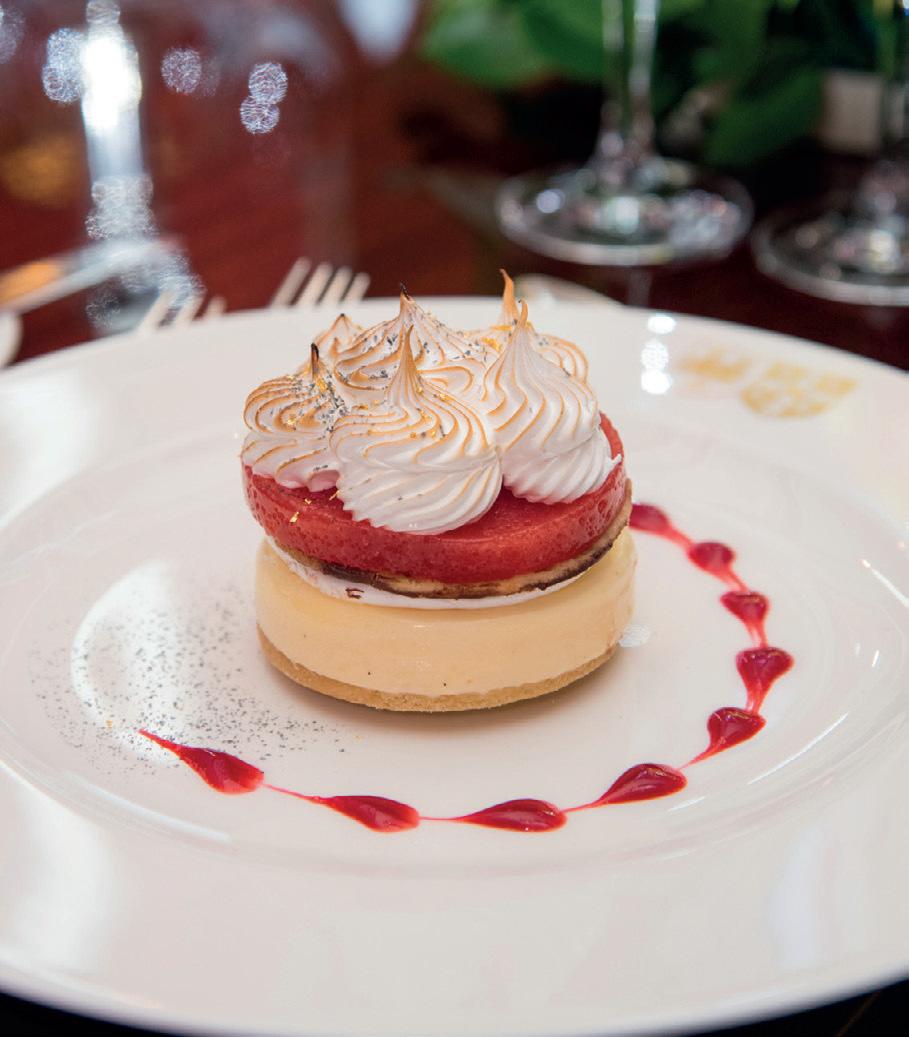




For nearly 200 years alumni have chosen to take up membership of a spacious and elegant private club in the heart of London. The Oxford and Cambridge Club in Pall Mall is the perfect place to meet for a drink, entertain friends and colleagues in magnificent surroundings, play squash, take a break, host a party or just find a quiet corner to prepare for a meeting. A thriving social scene, sports facilities, a lively calendar of events including talks, tastings, dinners and balls, an exceptionally well-stocked library, extensive wine cellars and more than 40 bedrooms mean our members use their club for recreation, relaxation and business - and now you can too. For details on membership or a tour of the Club house on Pall Mall, please visit www.oxfordandcambridgeclub.co.uk or call 020 7321 5110 Oxford and Cambridge Club @oandcclub Welcome
f anything ever happened to Google Docs, both my degree and my life more generally would be in shambles. I have two accounts that roughly divide my two duties – one for academics and one for my own writing. Actually, to be more precise, I have a lot of other people’s writing in there too. I’d like to see myself as discerning (some people would just describe how loathe I am to say that I like something, but discerning will do) and so I’ve taken up a number of script editing jobs within Cambridge theatre. Either by accident or out of a desire to have my name attached to a stellar script, I think the role holds a lot of value – especially as I look towards writing my own ma-



I’ll be honest and say that most of my script editing jobs have sort of just happened. Considering that you can technically receive the credit of script editor from merely tweaking a friend’s here



and there (I probably could have wrangled a few more credits if I had been desperate enough), it doesn’t necessarily have the grandeur that other theatrical roles have. However, as time passes, I’m realising more and more how integral it is. Script editors are essentially just more pairs of eyes testing whether a writer’s material works – something that is especially useful for genres like comedy, where an audience’s response is so unpredictable. I’ve been enjoying script editing here just to have a say in shows that I can’t commit as much time to, and also to re ne my editorial eye. Helping with the script for in Lent last year has helped me with pinpointing exactly how to word a joke in order for it to land with the audi-




From what I can tell, many writers don’t necessarily seek out editors for their work. As a self-proclaimed writer myself, it is most likely due to an understandable urge to keep your words close to your chest. Yet after writing my entry to this term’s Smorgasbord in about two hours

















and then quickly becoming too swamped with my own hellish personal life to change the jokes that were only ever there as placeholders for something better, I appreciate having a team of people to believe in and then improve your work more than ever. I’m now very rmly of the opinion that writers make their work more collaborative if they aim to put it to an audience. A group of ve extra editors can be microcosmic of your wider audience and therefore put you in a better position to earn that applause you so e theatre is an inherently collaborative and communal experience – therefore its production should seek to involve as many people as possible. A Comedy About a Priest this term, I know that comedic scripts especially utilise script editors without meaning to – the show feels more fun because of the cast’s freedom to ask “Would it be funnier if…?”. Being part of the tion uniquely exciting – you get the immense satisfaction of hearing a line being delivered and thinking:


e women’s rugby Blues captain tells all on juggling term with being a full-time athlete
Romilly Norfolk Sport Editor
I rst approached Bethan Jones, this season’s Blues women’s rugby captain, for an interview when I realised the women’s squad plays far more games in Michaelmas than the men’s Blues squad. e men play seven games over the eight week term, while the women play 14. is disparity in xture densities wasn’t something I saw in the other sports I looked at, and in such a busy academic environment, didn’t seem fair. I wanted to speak to her about the tough schedule of Blues athletes, the culture of the women’s squad, and issues facing women’s rugby.
Bethan explains to me that the unequal schedule is because the men’s Blues don’t actually play in the BUCS league (the country-wide university sports league); their level is too high to compete, so the men “can decide when they play”, reducing their xture overload.
unlucky that most of her teaching is done on a Wednesday. Another stroke of poor fortune for Bethan is that her lectures are also not recorded. So in order to be rugby captain, Bethan must sacrice her contact hours and learn through notes taken by others.
Even though she acknowledges that, with their xture density, balancing work and sport is “a struggle”, Bethan notes it’s harder for the undergraduates in the team. “ e undergrads are often working on the bus to and from games, [and] even when we win,” she thinks, these players “don’t get as much enjoyment”. ese are also the players who cannot a ord to get away from their studies; many are shackled to unmissable labs and supos, stopping them from playing games completely.
“ e xture density does make it harder for the women,” admits Bethan, but she notes that this is a fault of the xture system and not down to the men. Nevertheless, she laments that Cambridge could do more to accommodate sport alongside academics.
Bethan points out the irony of the support the University shows towards Blues athletes; Cambridge celebrates their athletes online constantly, but when it comes to actually facilitating athletes there is a lack of care.
e women have three teams, and, unlike the men, take beginners. is is a testament to the “huge” development squad the women have. Bethan credits the coaching sta who train newcomers. I ask if there have been any success stories of newbies doing exceptionally well, and receive the story of one student who came to the club having never played rugby before but within the year had been scouted by a top London side.
rst ever Varsity rugby match in 1988. e women weren’t allowed to wear Cambridge Blue, nor play at Grange Road, and until 2022 players weren’t awarded caps for their Varsity appearances. Even then, those awarded caps did not know their cap number as all previous players hadn’t been capped, until previous captain Millie Bushrod started ‘the cap project’. Single-handedly, Millie recorded all the caps dating back to 1988 and presented them to players and alumni.


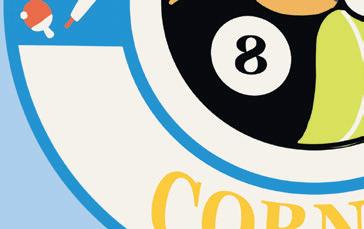

Why ri e shooting?


e huge number of xtures faced by the women’s squad is worsened by the structure of the Cambridge timetable. At most British universities, Wednesday afternoon is scheduled o to facilitate
When it comes to actually facilitating athletes there is a lack of care ❝ Many are shackled to unmissable labs and supos BUCS sport and

Bethan commends the “massive undertaking” of the project, and how “amazing” it is to think about the legacy of the women that played before her. She recites her cap number to me o by heart, “436”, showing the importance of this legacy to her. When I ask why no one had tried to do this before Millie, Bethan suspects it was most likely because of “laziness, complacency and people not having any time.”
I never thought I’d get into ri e shooting (believe me, I’m far from the stereotype…). My whole life I’ve done martial arts, and then of course I picked up rowing when I came to Cambridge. After four lovely years of rowing de ning my life, I wanted to try something new. e only thing I knew about the Cambridge University Ri e Association (CURA), the fullbore club, was that they shoot at up to 1200 yards. “Over a kilometre? at’s insane! I need to try that!” So yeah, I got hooked, and it’s a fantastic sport to pick up from scratch. ere’s so much more to it than just the shooting itself, there’s a lot to learn about managing, e.g. the wind and coaching other people, and I also particularly enjoy the tinker-y side of it (there are a lot of rabbit holes about ballistics calculations to tailor your ammunition, di erent stock designs and the like).
What is the best bit about being captain?
Introducing new people to this fantastic sport and seeing them grow! Shooting is also a relatively small community, and as captain you have a lot of exposure to all these lovely people. I also like being able to implement new ideas and help shape the club for the future.
Is it easy for beginners to join?
Yes (ish)! Yes, because ri e shooting is a fantastic beginner sport, which you can pick up from scratch and get to a very high standard within your rst year. It’s also a rare case of a sport where gender and age (besides experience) don’t really matter, allowing anyone to compete on an equal basis against each other.

Who is your sporting idol?
I think one of the coolest athletes in the sport is Nick Tremlett, who has an uncountable number of England and GB caps and has won just about every major competition several times. He’s just very damn good.
Season predictions? I’m excited for the new fullbore season, and I hope we’ll win both Varsity trophies for the full sweep








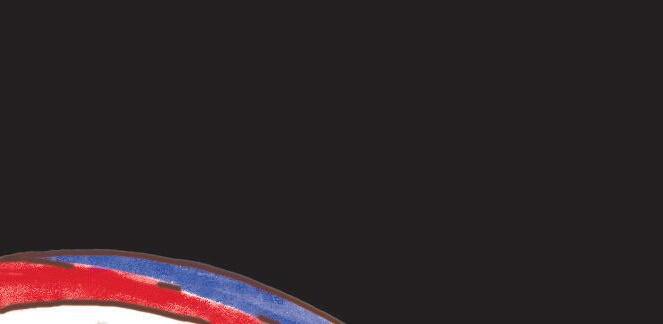
Bethan speaks about the “supportive culture” of the women’s team: “ ere’s no pressure to turn up all the time,” she notes, “you get out what you put in”. You can either go to all three training sessions a week or just play casually when you can. e three teams allow people to “determine their commitment to the





is culture goes beyond the women’s team, with the whole of Cambridge rugby having a supportive culture. e men and women’s clubs merged into one in 2013 and Bethan speaks about how the women’s team have bene ted from the change. “Respect for the Rugby Club is huge […] now the women’s club get the same respect, the same opportunities”. It’s really clear that people at all levels of the club care about the women’s squad’s involvement: Bethan particularly celebrates the assistant director of the club for his attention to the women’s side.
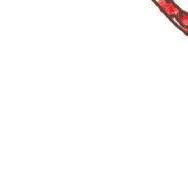

From questions of women’s sport in the past, I move to more modern issues of discussion. On the topic of injuries, I of course have to ask about concussions. Bethan tells me that “three seasons ago the squad had a lot of concussions”, but neck-strengthening exercises have been introduced and have reduced the number of concussions: “we only had four or ve last year.”
Pre-competition rituals?
Set my sights to the correct settings, stretch, check my sights again, check my ammo and other kit is ready, watch the wind and convince myself that I know what it’s doing, check my sights again because I’m paranoid (and there’s nothing worse than missing your rst shot because your sights were set wrong).

Cambridge rugby has come a long way since the women played their

e University recently announced they have partnered with a period product company to provide period products at all University sports grounds. I ask Bethan about how periods and rugby mix, which inevitably leads to a mention of the England women’s football squad and their popularisation of white shorts. She speaks about how there have been times when the players have had to ‘check’ one another, but, despite the inconvenience, they wouldn’t change their kit. e team want to honour the women before them who fought to wear the Cambridge Blue kit.




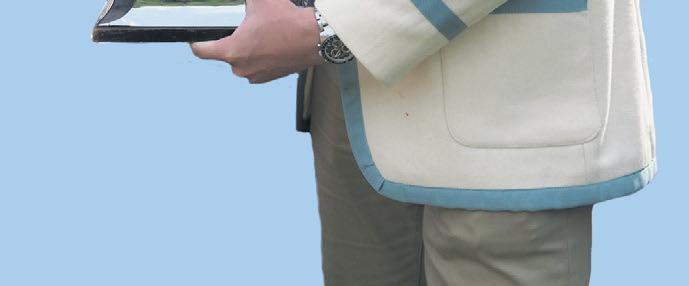



Captain’s Corner















Joss Heddle-Bacon Sport correspondent
Light blue once again reigned supreme as Cambridge women’s Blues emerged 3-2 victors in a riveting football season opener against Oxford. In a game lit up by drastic momentum shifts and moments of individual magic, Alissa Sattentau’s sparkling second-half brace proved enough to secure three points for the home side.
Cambridge initially appeared to have carried their momentum from an outstanding 2023-24 campaign, nding the top right corner of the Oxford net barely a minute into proceedings courtesy of Lara Branston’s driven e ort from outside the area. Having been stunned by Cambridge’s immediate intensity, Oxford seemed ignited after the restart, drawing a ne save from Sophie Perret before blazing a prime opportunity to
equalise over the bar in the fourth minute. Subsequently, the visitors began to nd their swagger, exposing the Cambridge defence with a blend of attractive mid eld passing moves and driving runs down the anks.
For all Oxford’s attacking dynamism, it was a Cambridge goal-keeping error that eventually yielded a 26th-minute equaliser, after Katie Glendening’s hopeful strike slipped through the gloves of a dejected Sophie Perret. Once on the scoresheet, Oxford continued to exhibit their creative air with some delightful technical football but were unable to convert sustained pressure into tangible results.
At halftime, Oxford would have been disappointed to remain level, having been largely dominant against a highly inexperienced Cambridge out t featuring just three returning players from last season. However, in spite of hav-
ing found themselves rmly on the back foot for much of the opening 45 minutes, Cambridge re-emerged from the break revitalised, pressing notably higher with a renewed intensity. Moments into the second half, Mia Farndon headed an inviting cross narrowly wide, before Alissa Sattentau coolly slotted Sakina Dhirani’s incisive ball home to restore Cambridge’s lead in the 50th minute, capping o a remarkable turnaround.
Dave Mellor’s shrewd tactical decision to switch to a 4-3-3 shape, alongside Sattentau’s panache and a stellar showing from Beth Harris enabled Cambridge to stretch a tiring Oxford defence. As time elapsed in the game, Oxford started to subside in the face of a new look light blues side that grew into their own, the visitors becoming increasingly passive and devoid of their former potency against a markedly more solid Cambridge defensive unit.
Victory appeared to be on the horizon when a moment of footballing wizardry from Sattentau put Cambridge 3-1 up in the 70th minute; the light blues’ number 9 twisting and turning her way through a wall of Oxford shirts, somehow fashioning a pocket of space and unfurling an awesome nish into the top left corner from 25 yards out to bag her second goal of the half. In the following minutes, the ames of Oxbridge rivalry began to be stoked by a couple of hefty challenges, with rising tempers on both sides eventually culminating in a stern telling o for the Oxford coach for his criticism of the referee. ings were soon to improve for the Oxford ga er however – his side nally managed to nd a foothold in the second half as it entered its closing stages. Waves of Oxford attacks threatened to put an end to Cambridge’s two-goal cushion, rekindling the tension in what
had been a previously one-sided half. A mistimed challenge in the dying seconds of the match gave Oxford a free kick on the edge of the area, which Kezia Elston expertly whipped into the bottom right corner. Elston’s brilliant nish provided a degree of consolation for Oxford, who had nally managed to rediscover the attacking brand of football that had seen them control the rst 45 minutes of the game.
At the nal whistle, 3-2 felt like a justi ed result; both sides enjoyed lengthy periods of dominance, but Cambridge were ultimately more clinical in what was a seesawing, captivating derby. e manner in which Cambridge’s edging squad grew in stature across the match, before taking the game by the scru of the neck in an exceptional secondhalf performance, should give the light blues plenty of cause for optimism for the 2024/25 campaign.